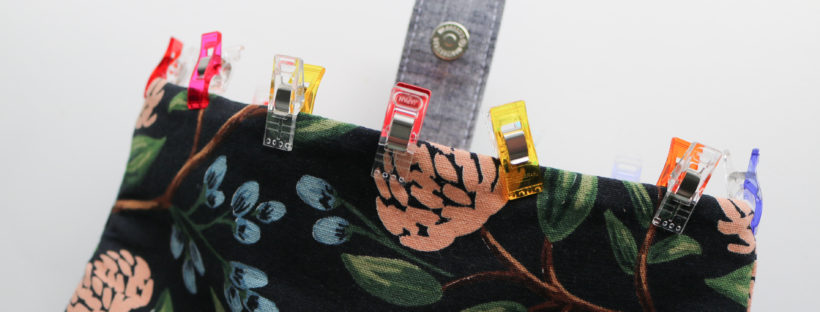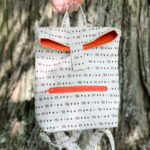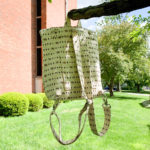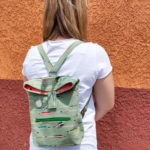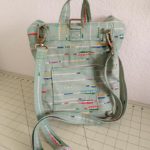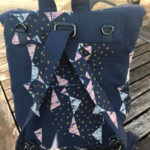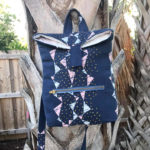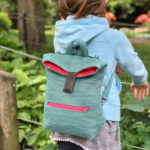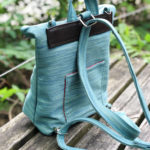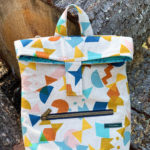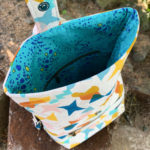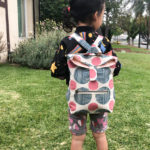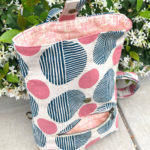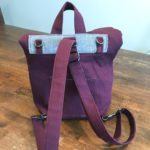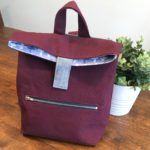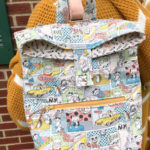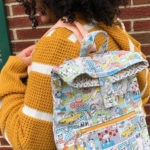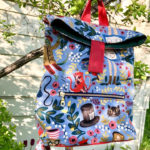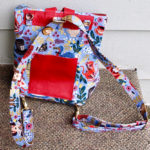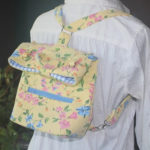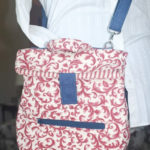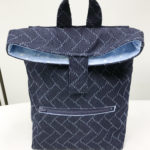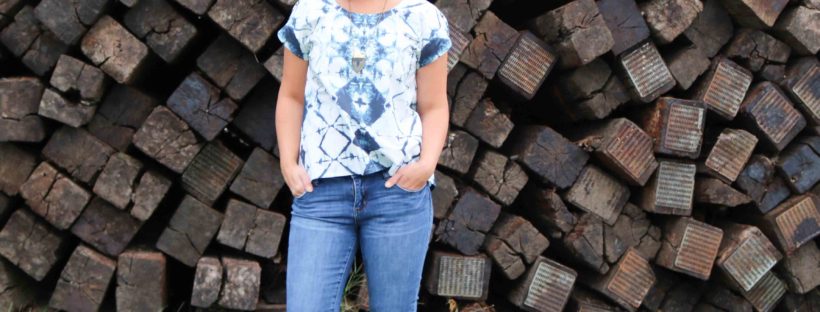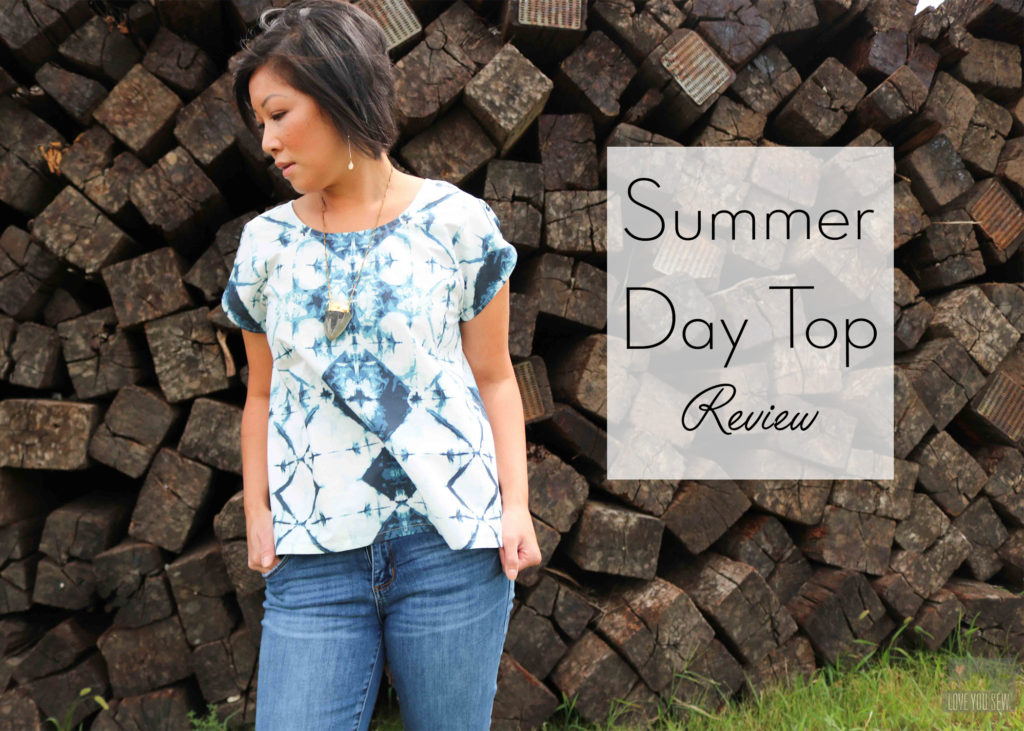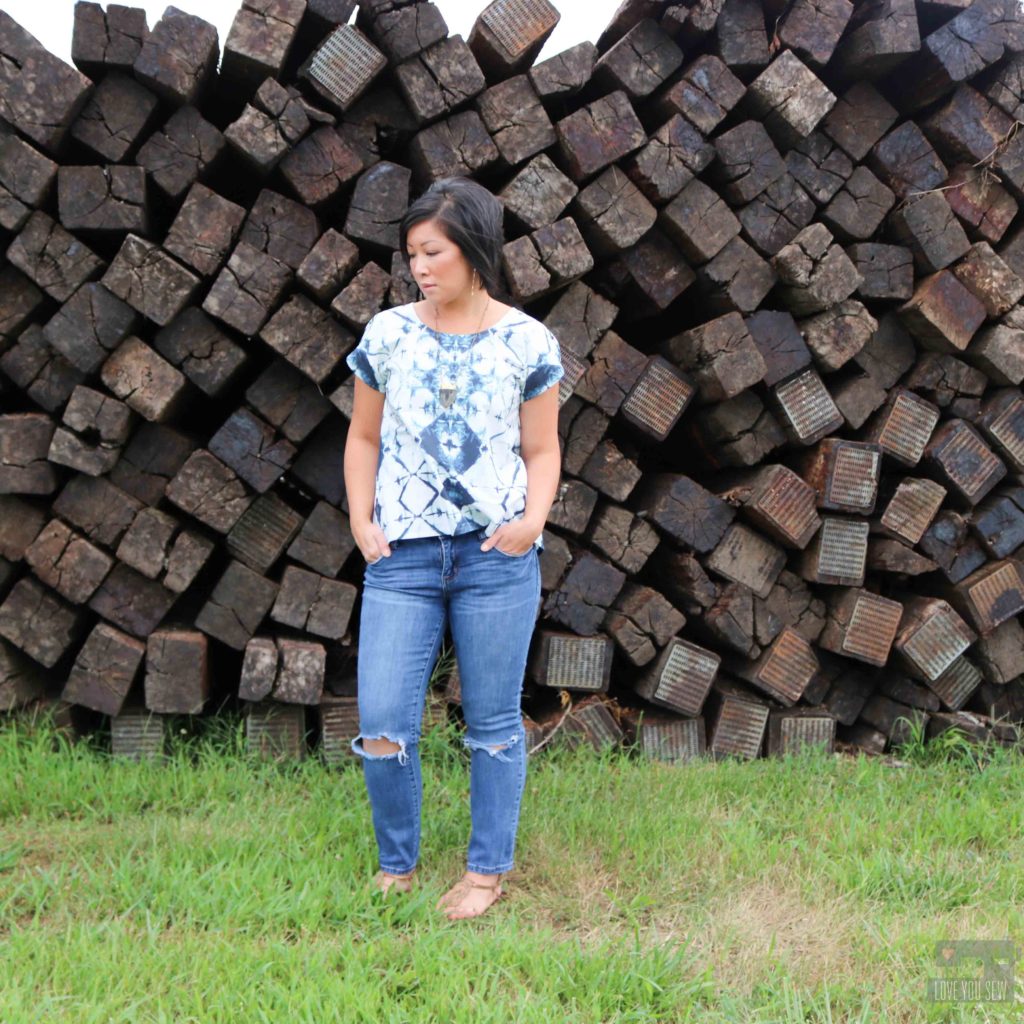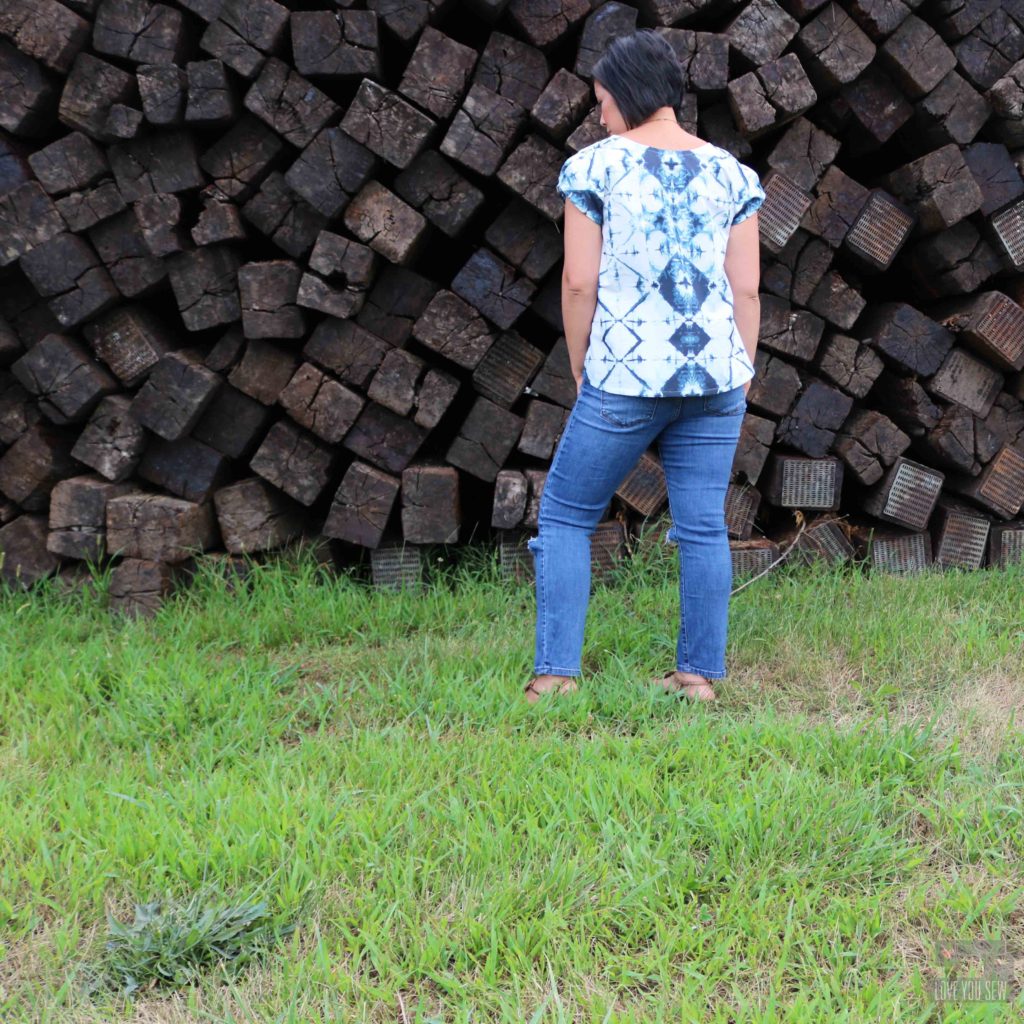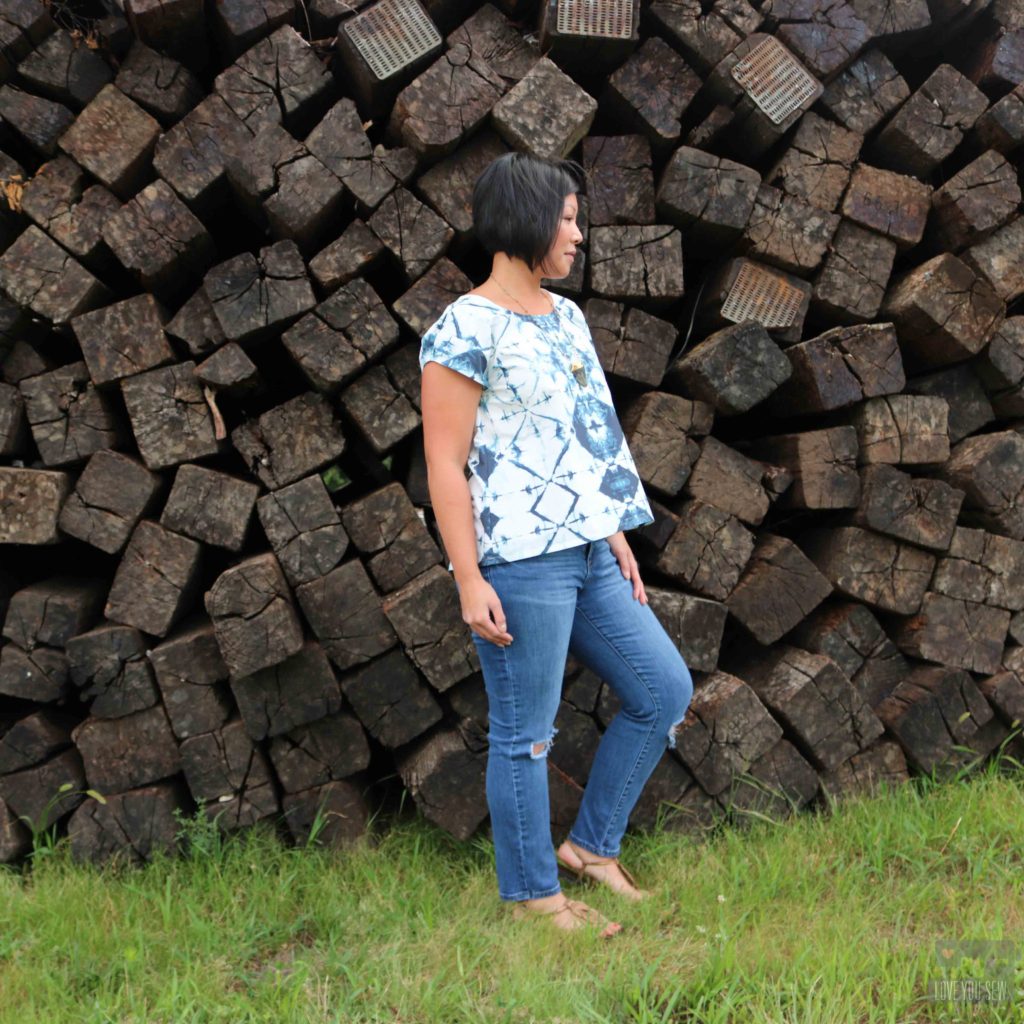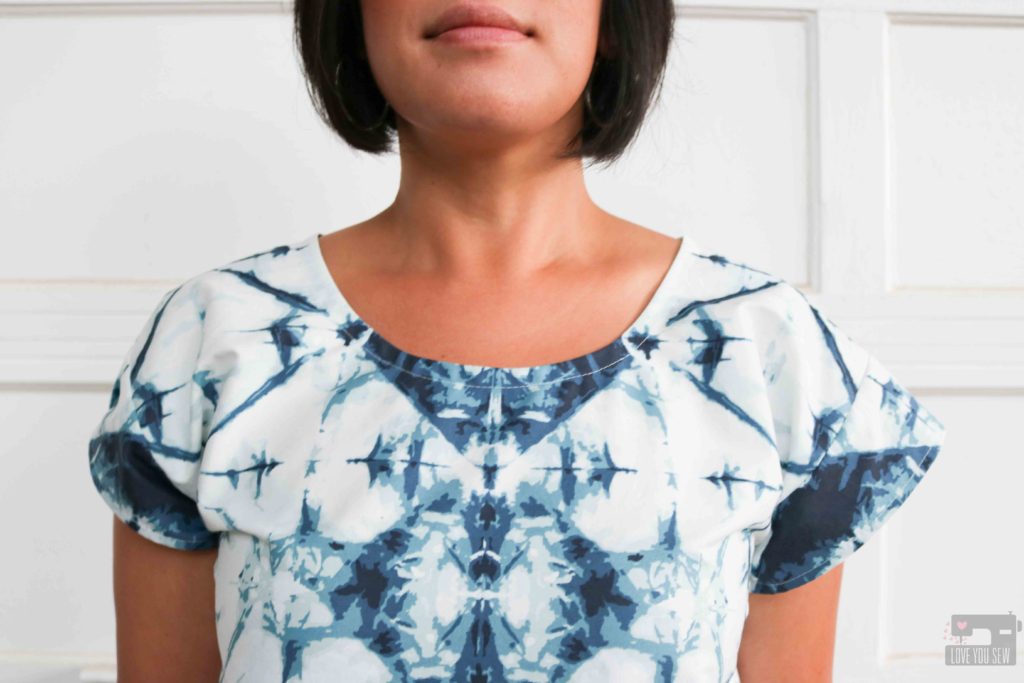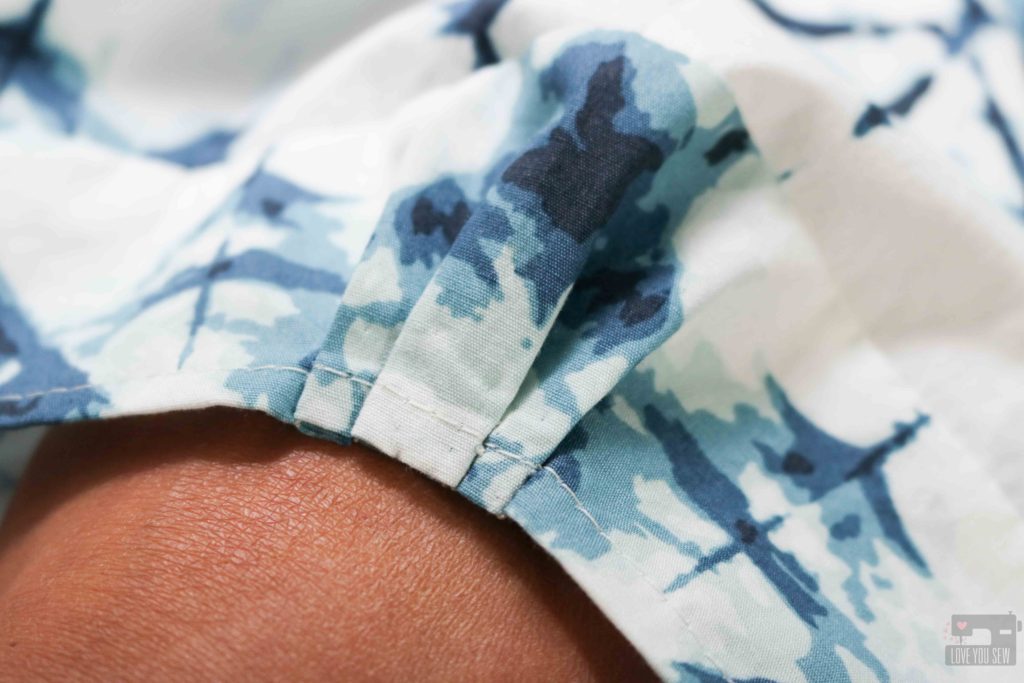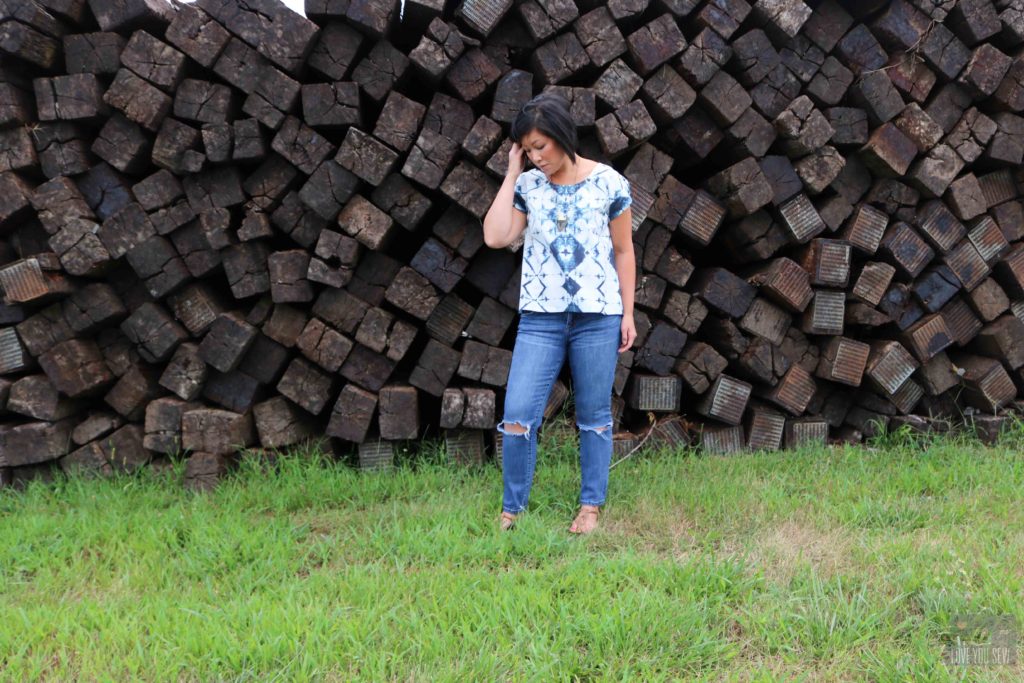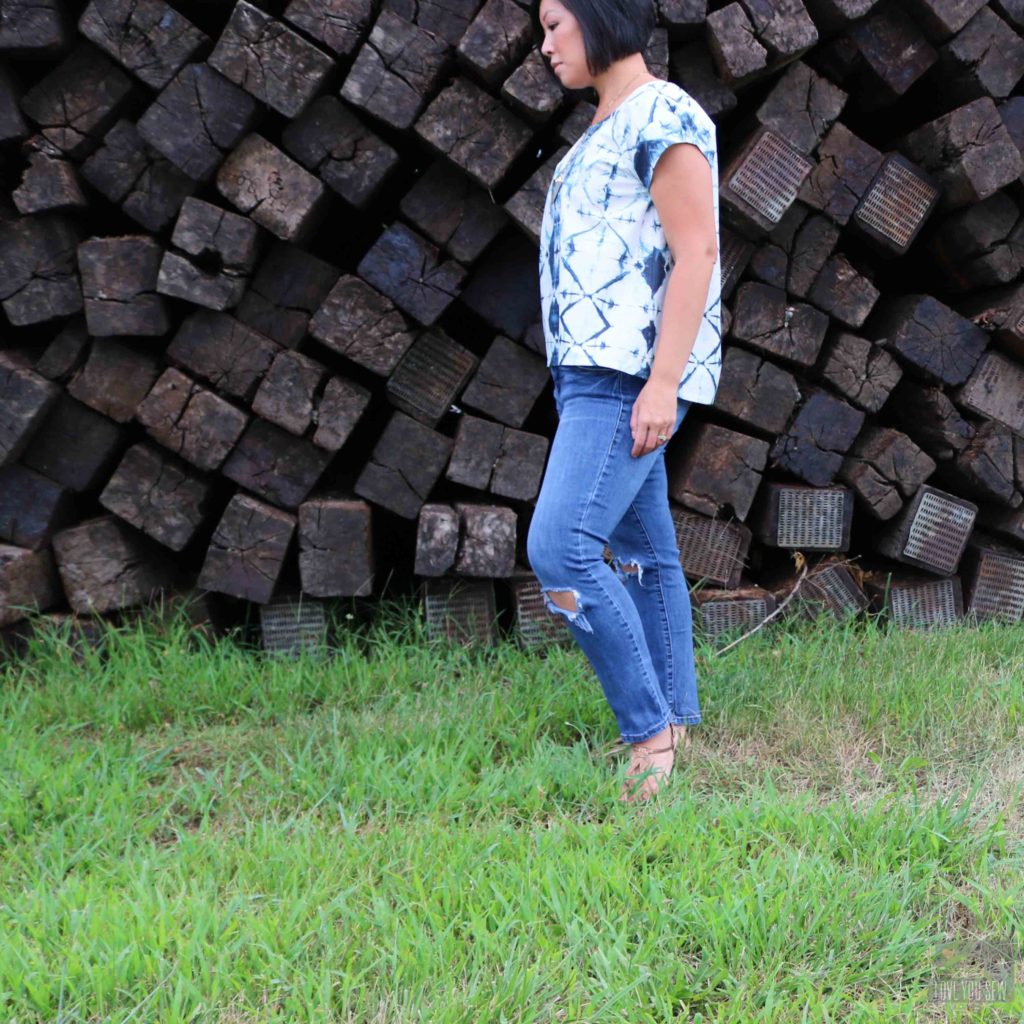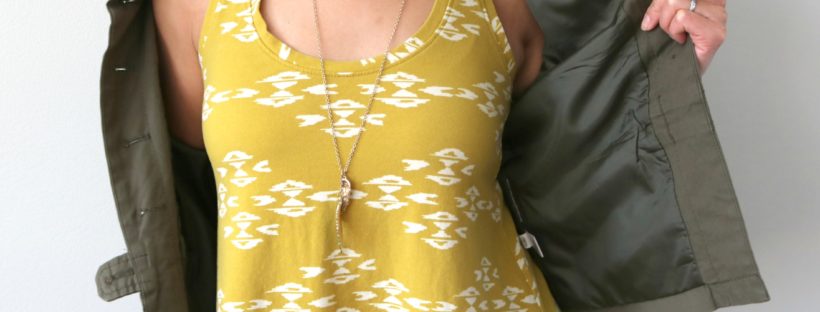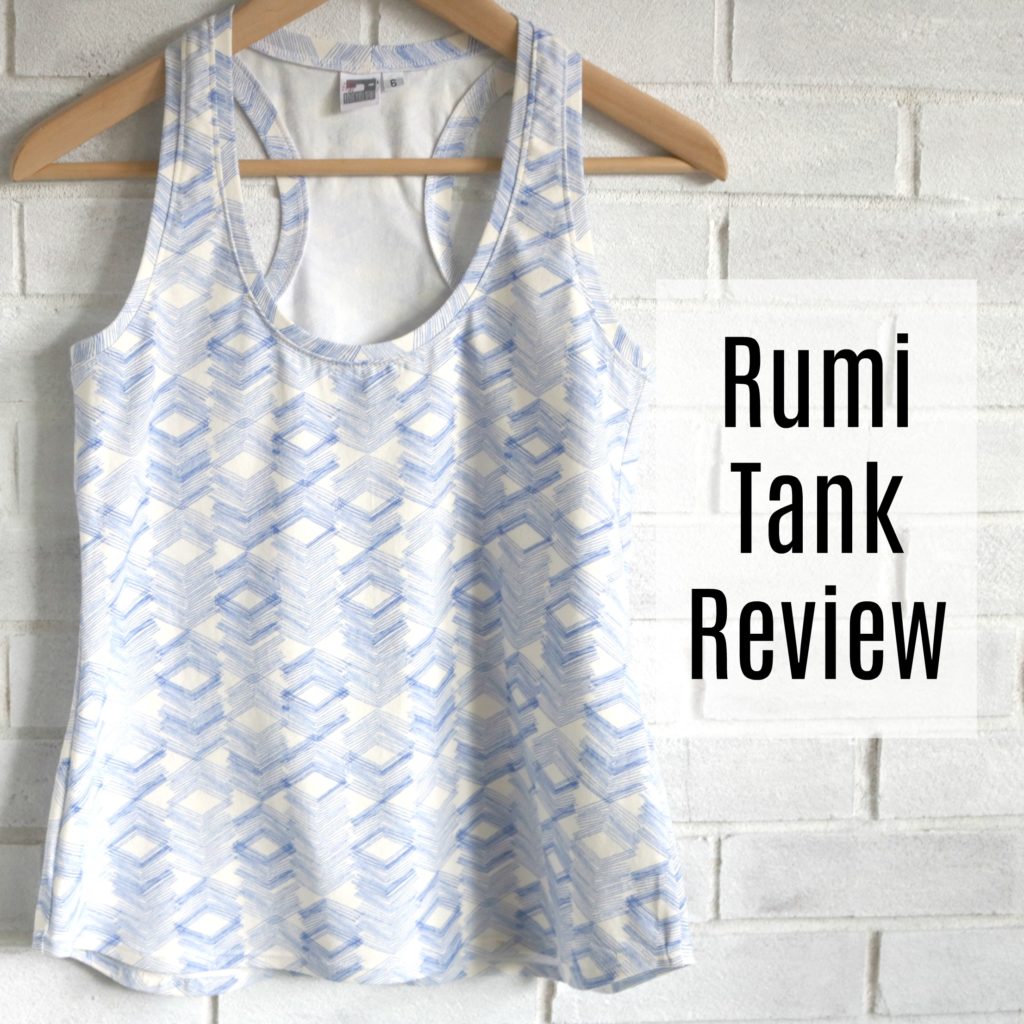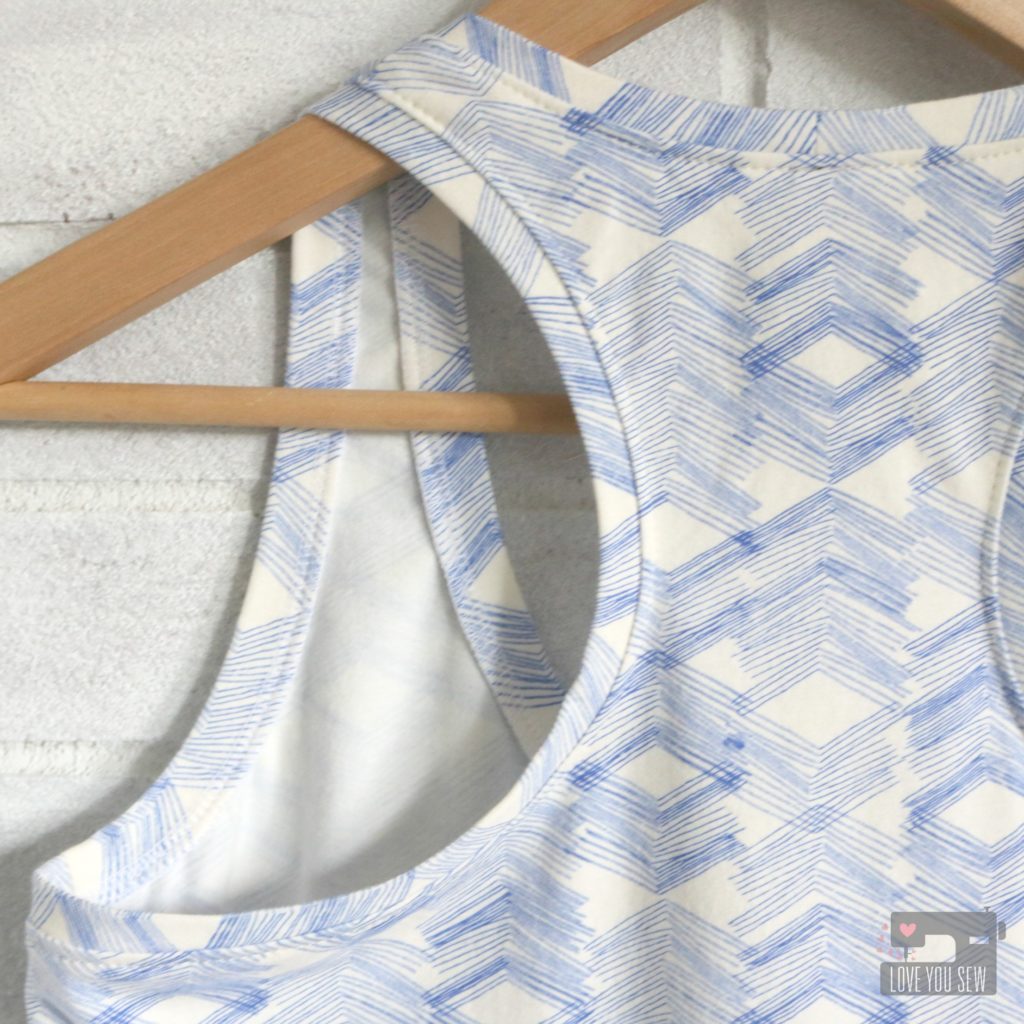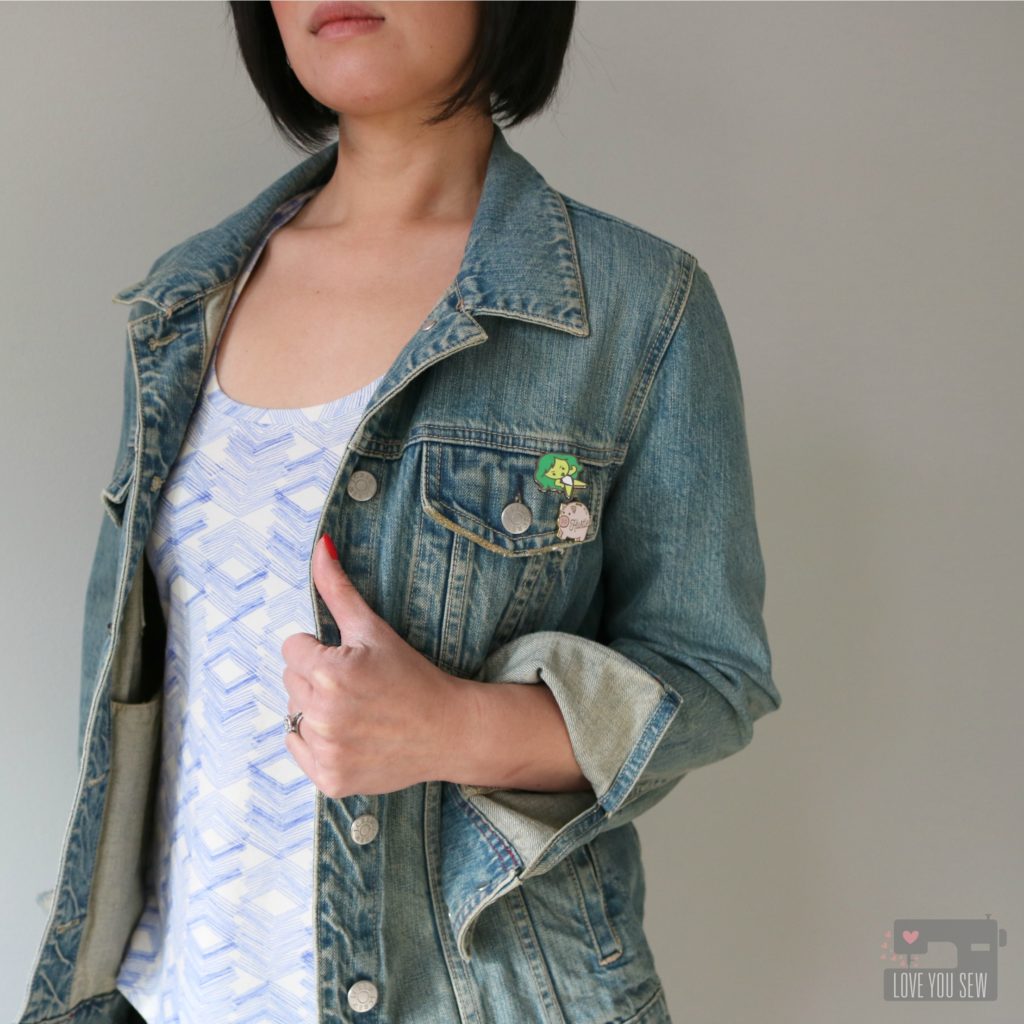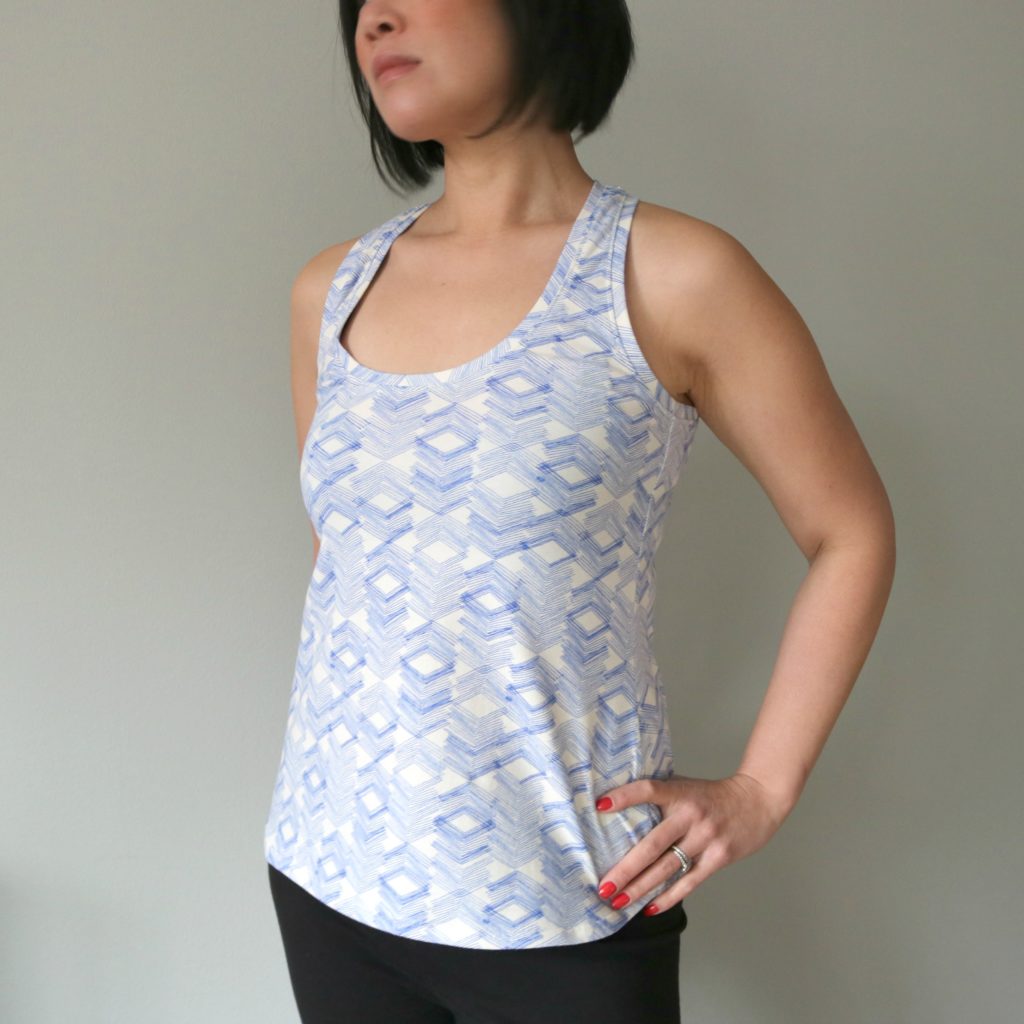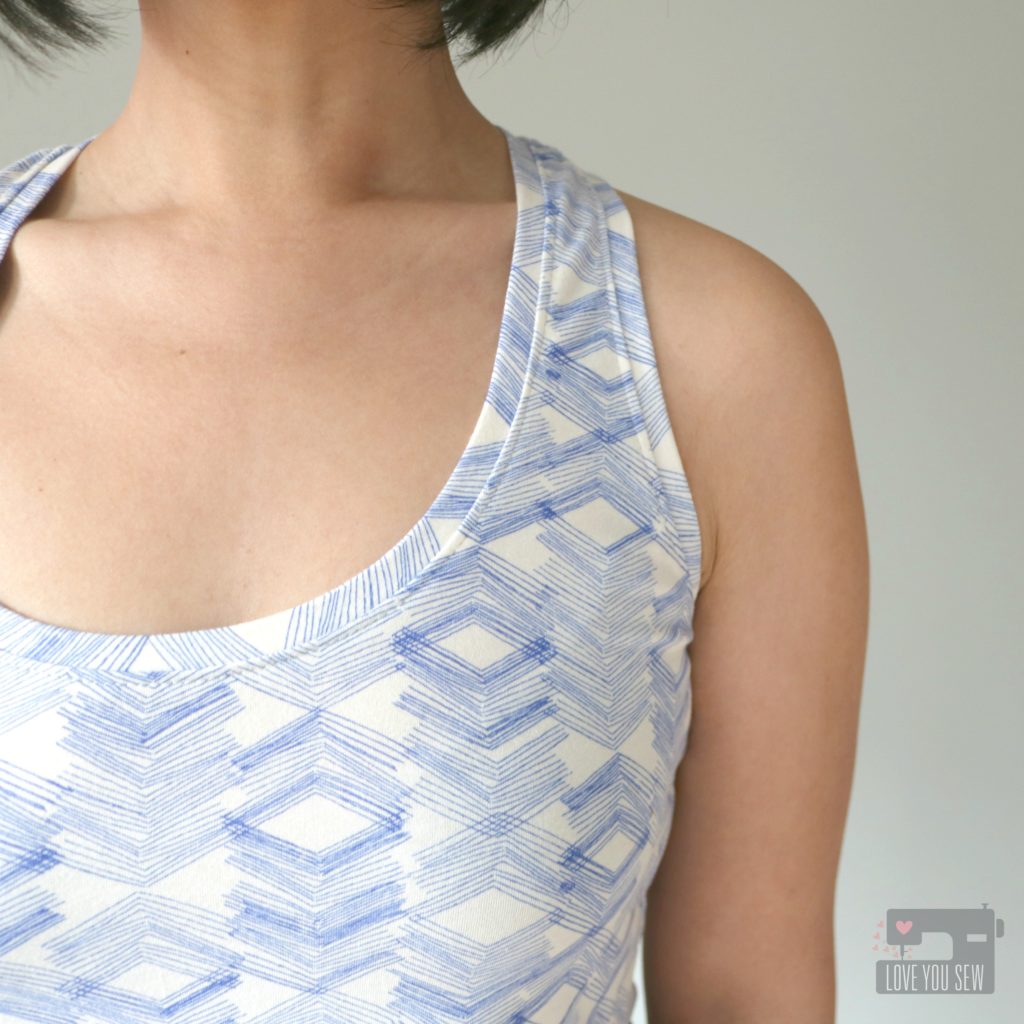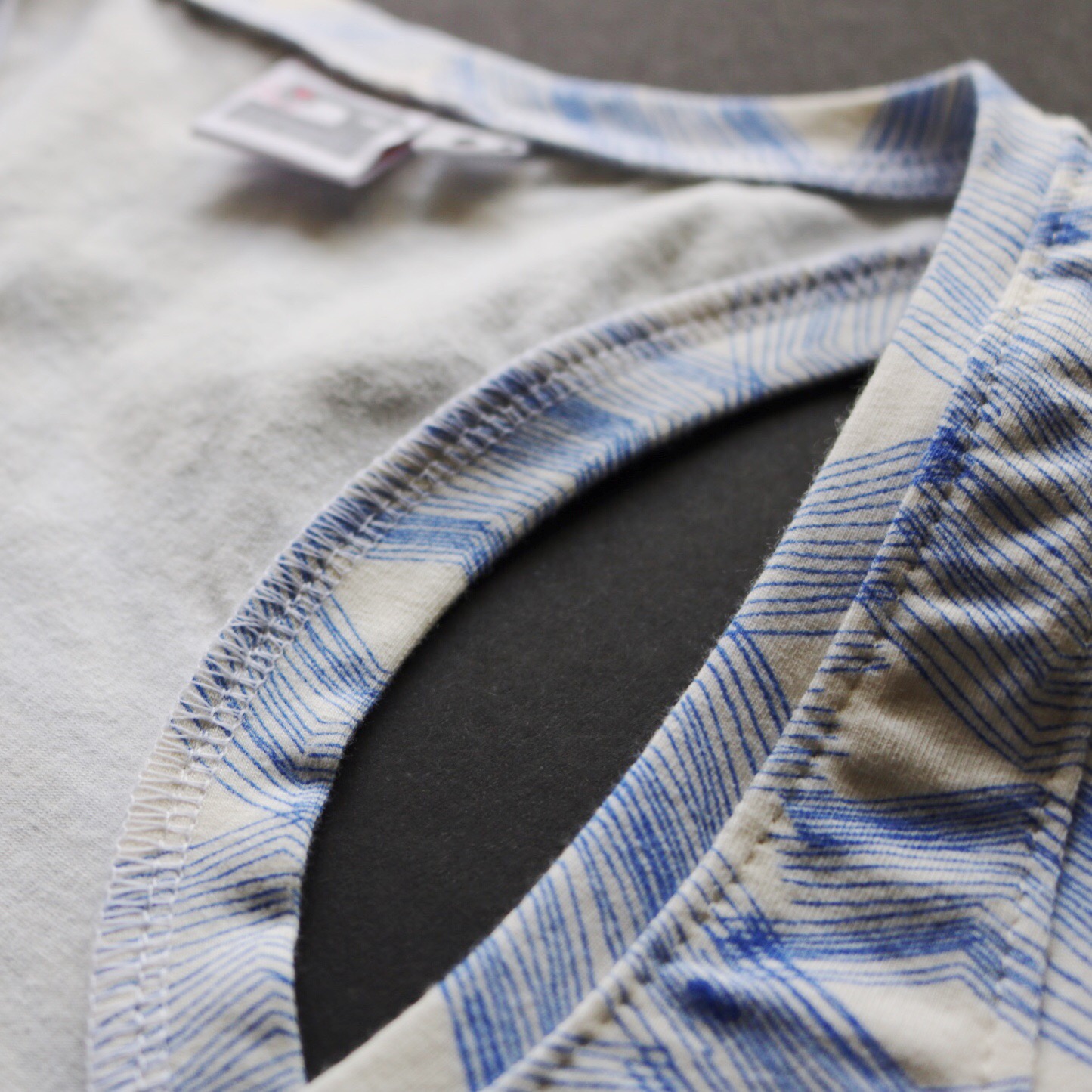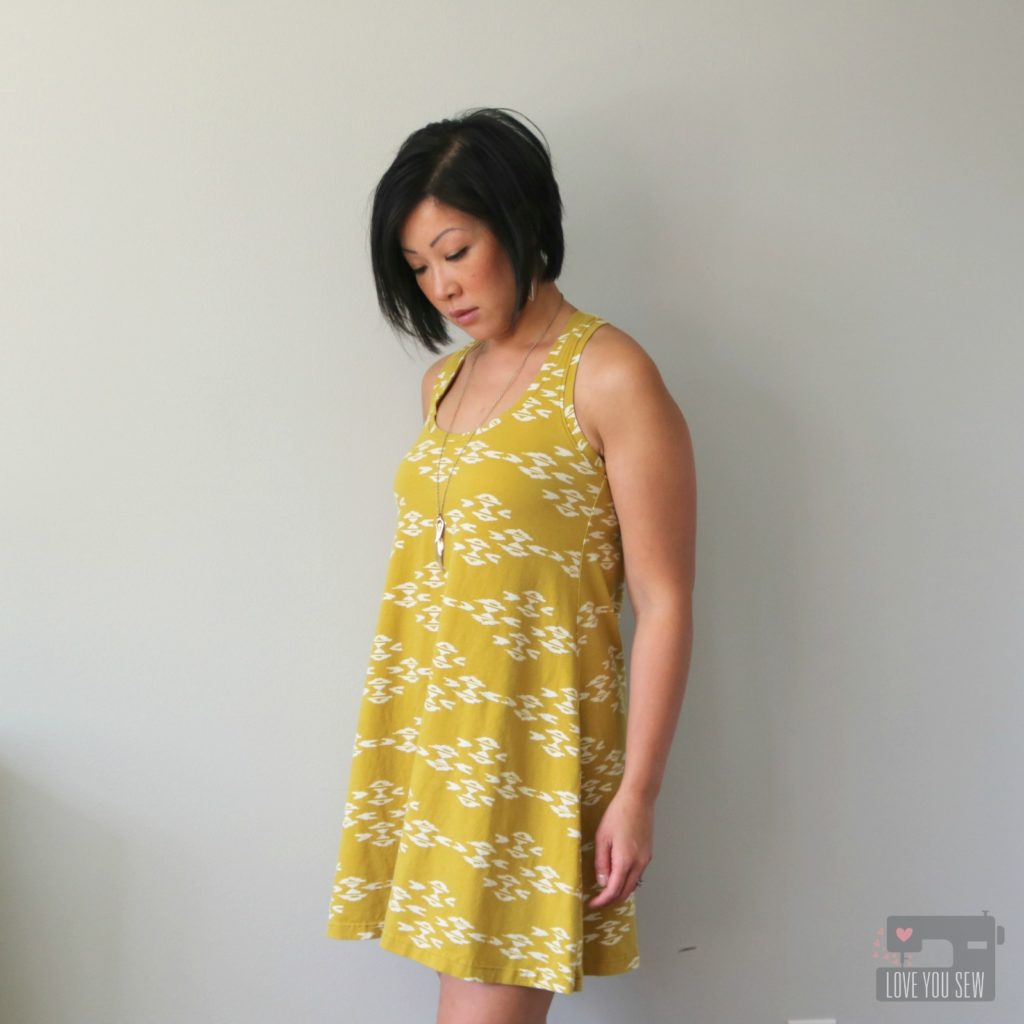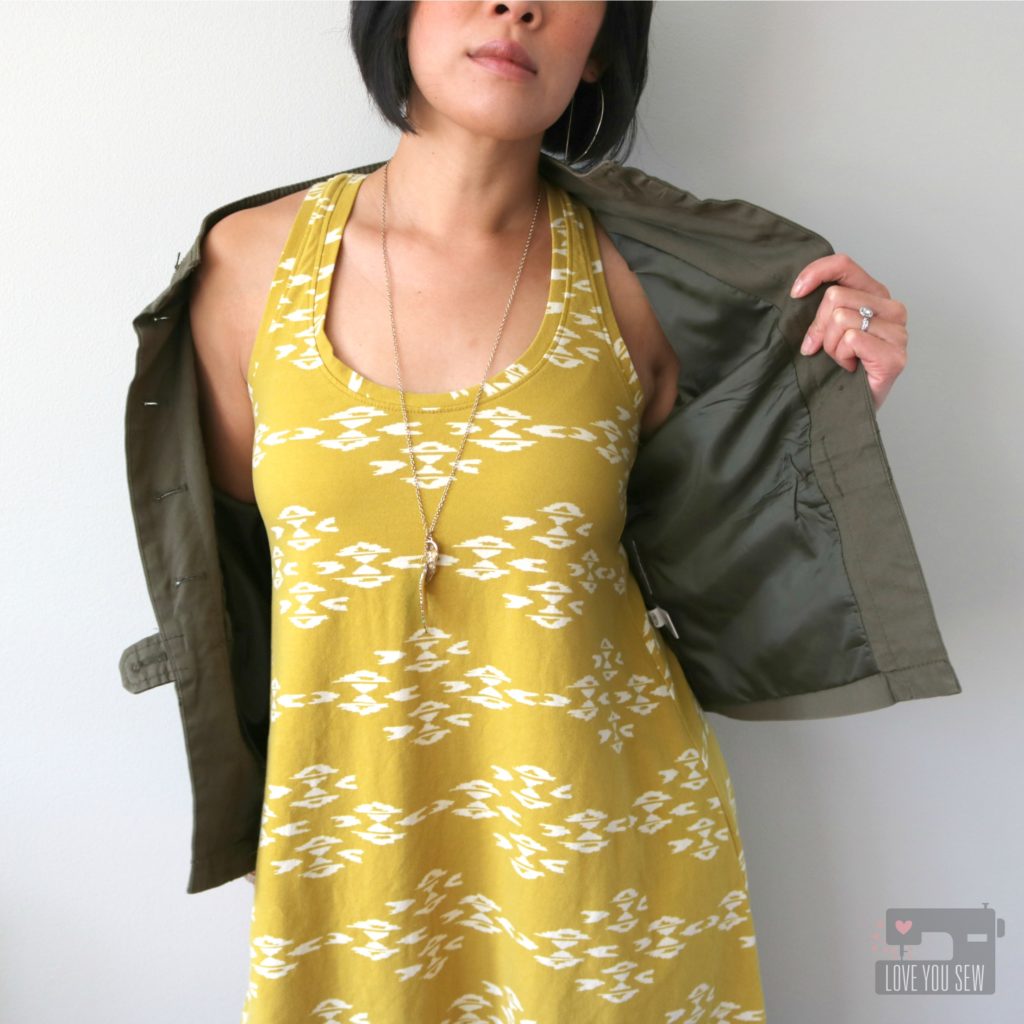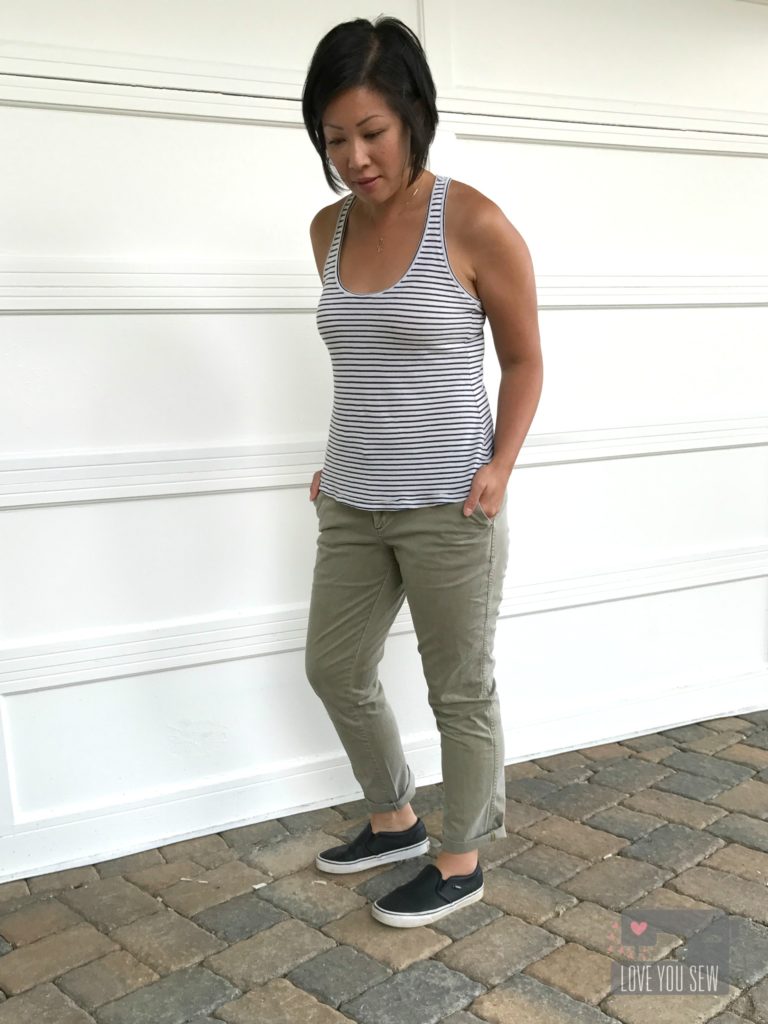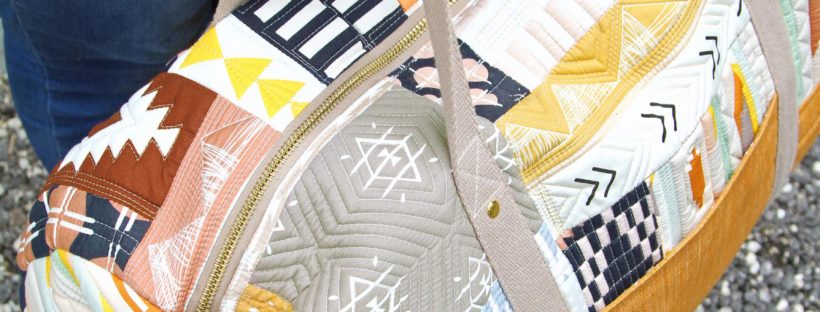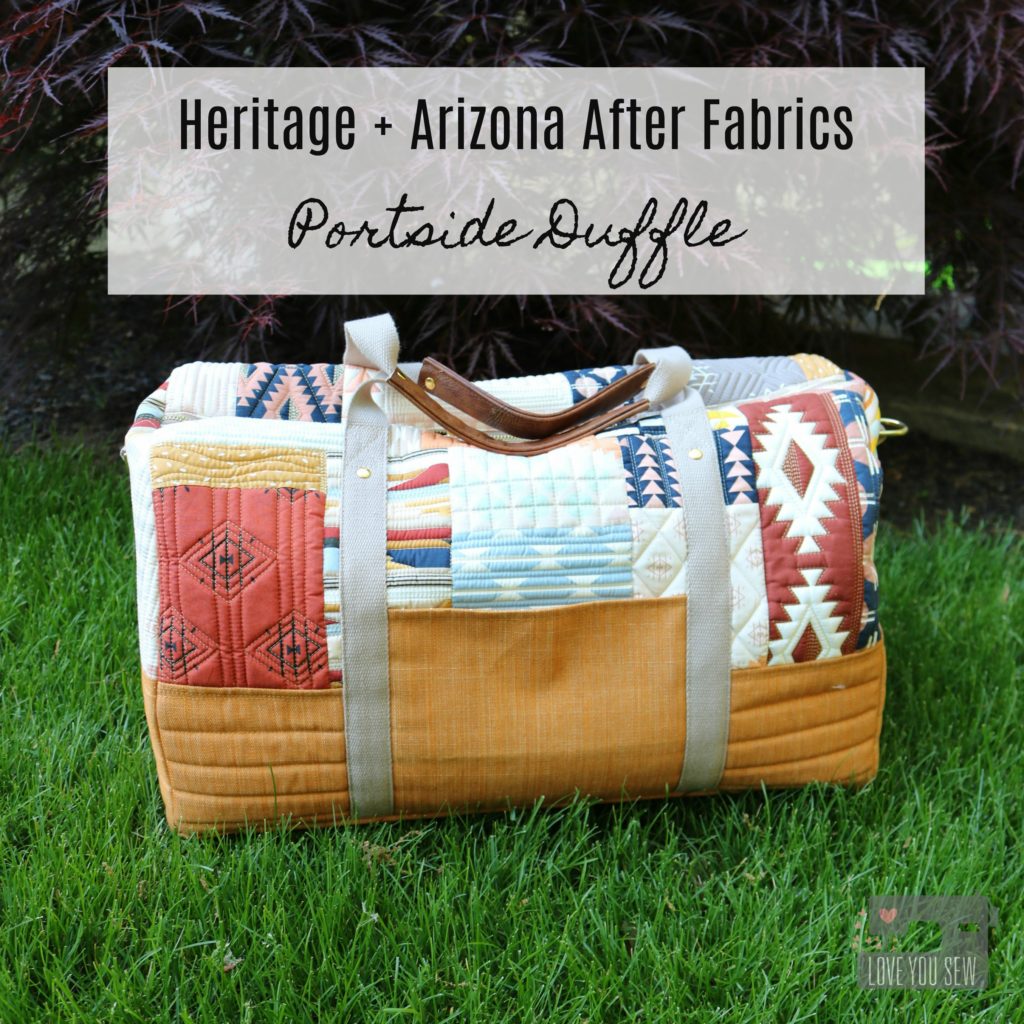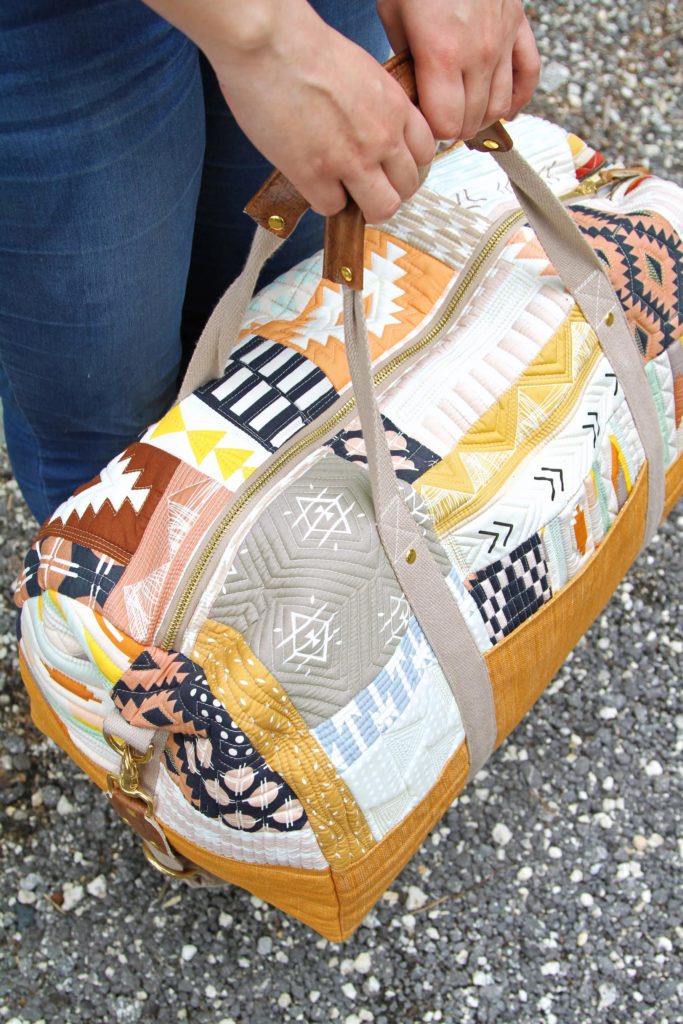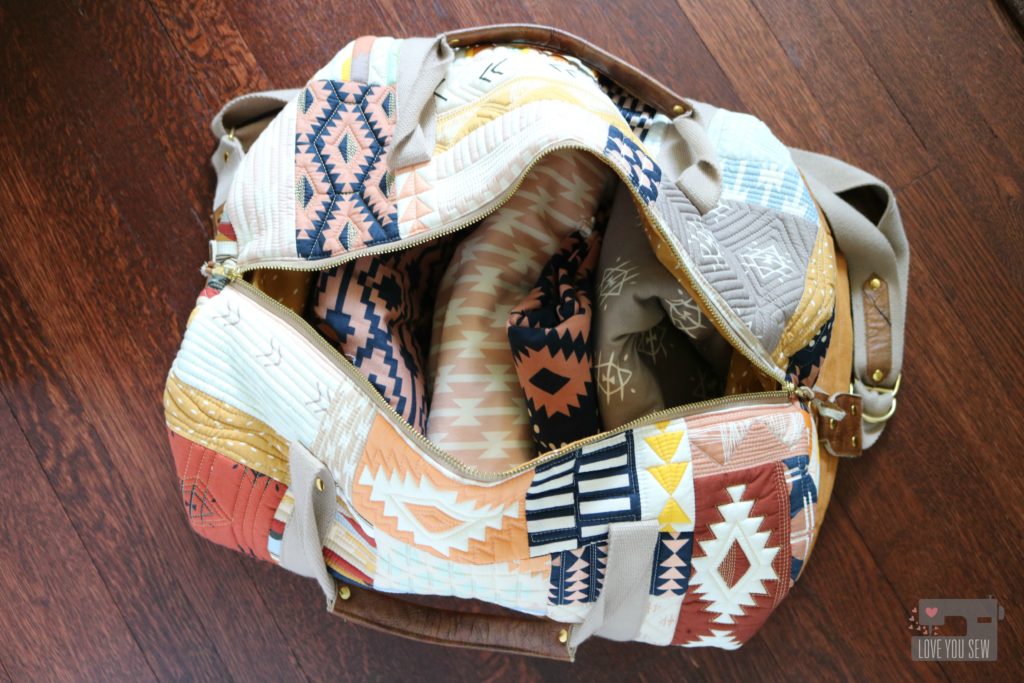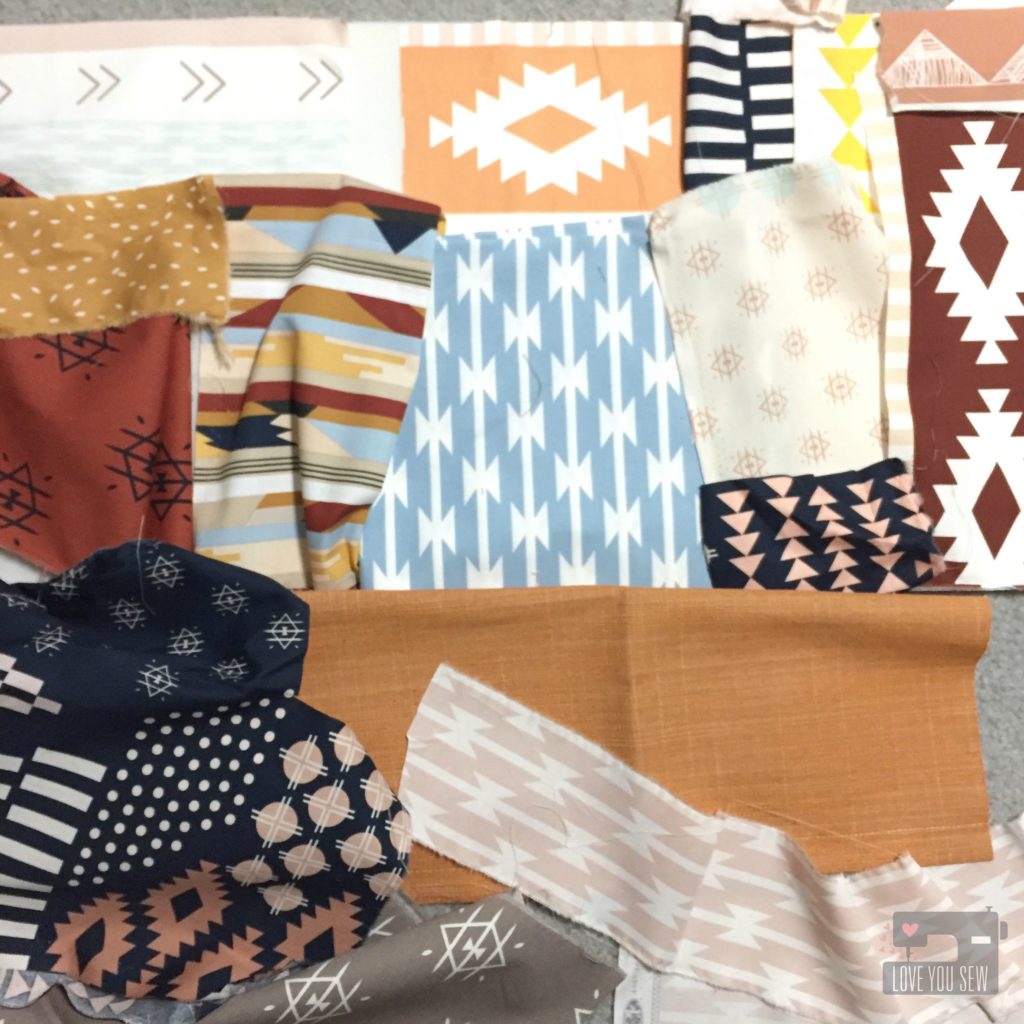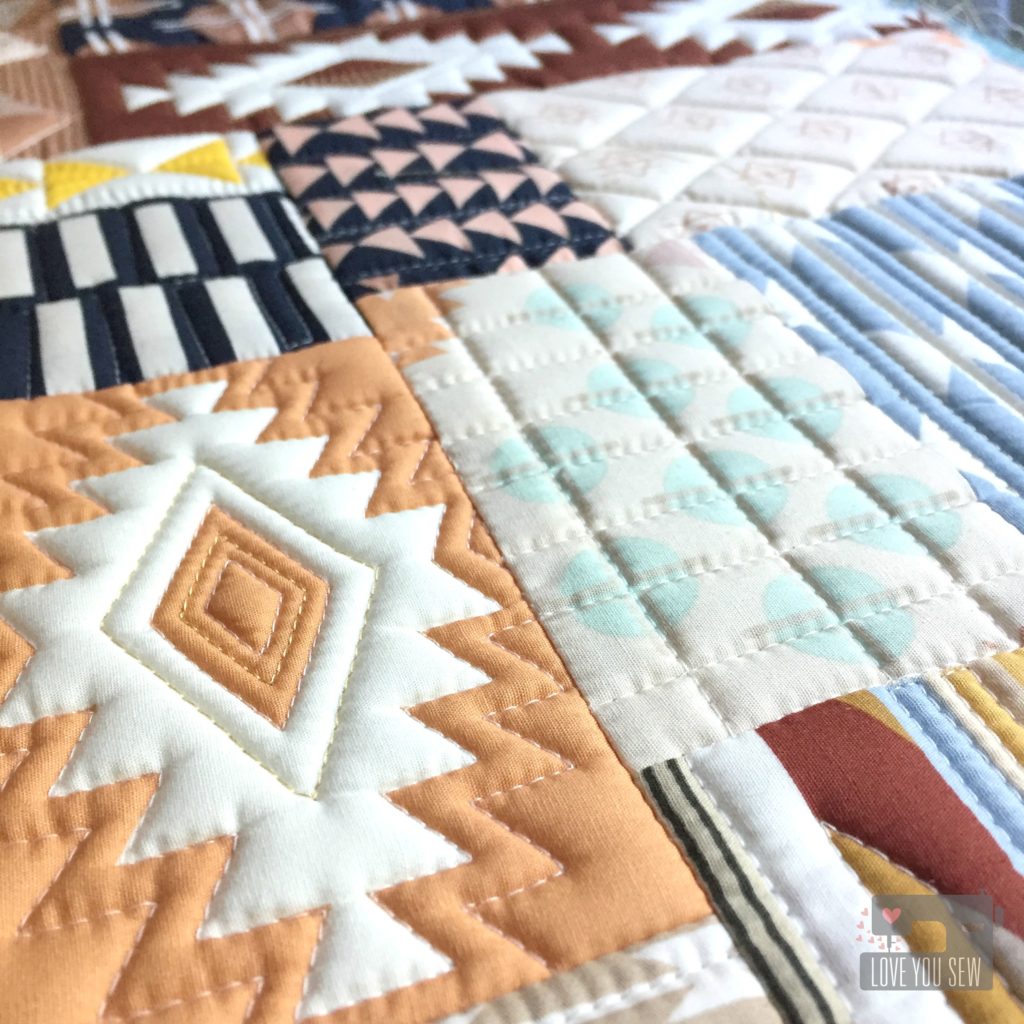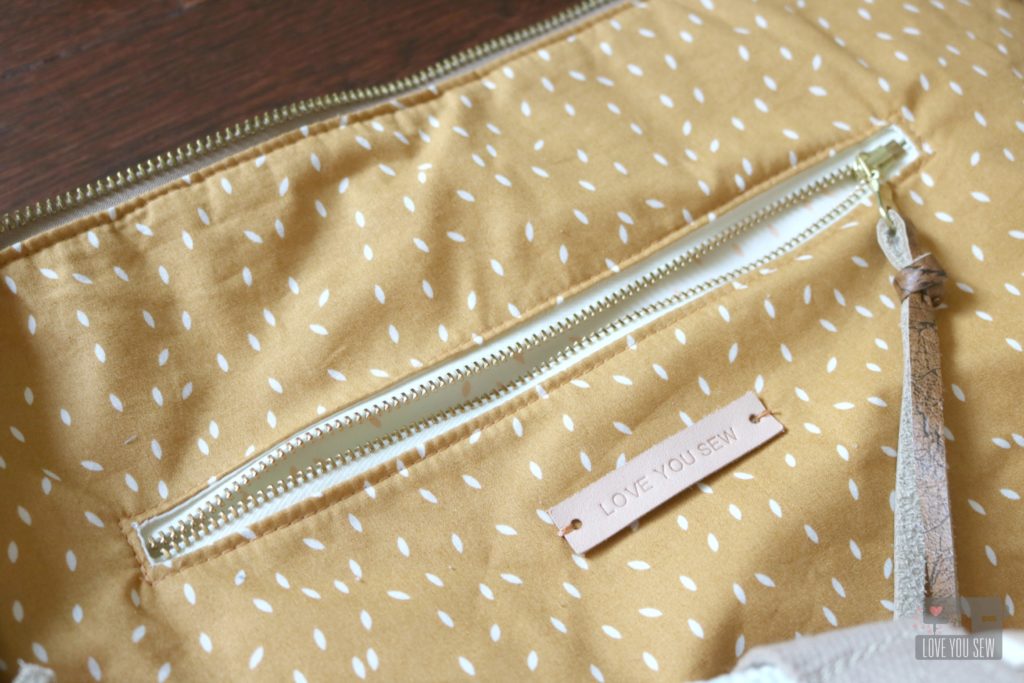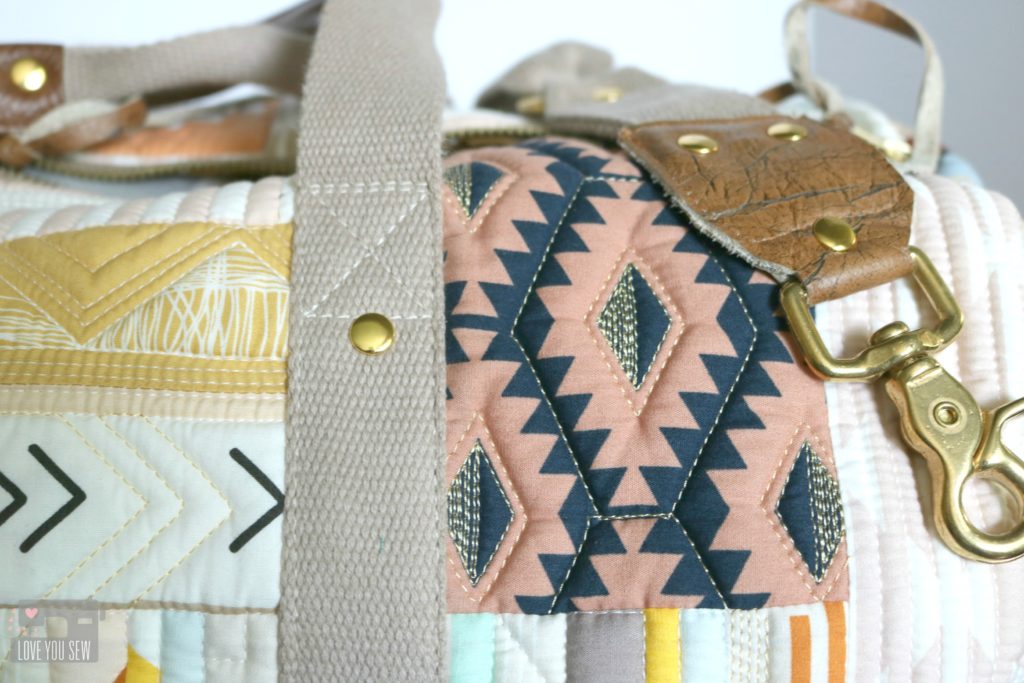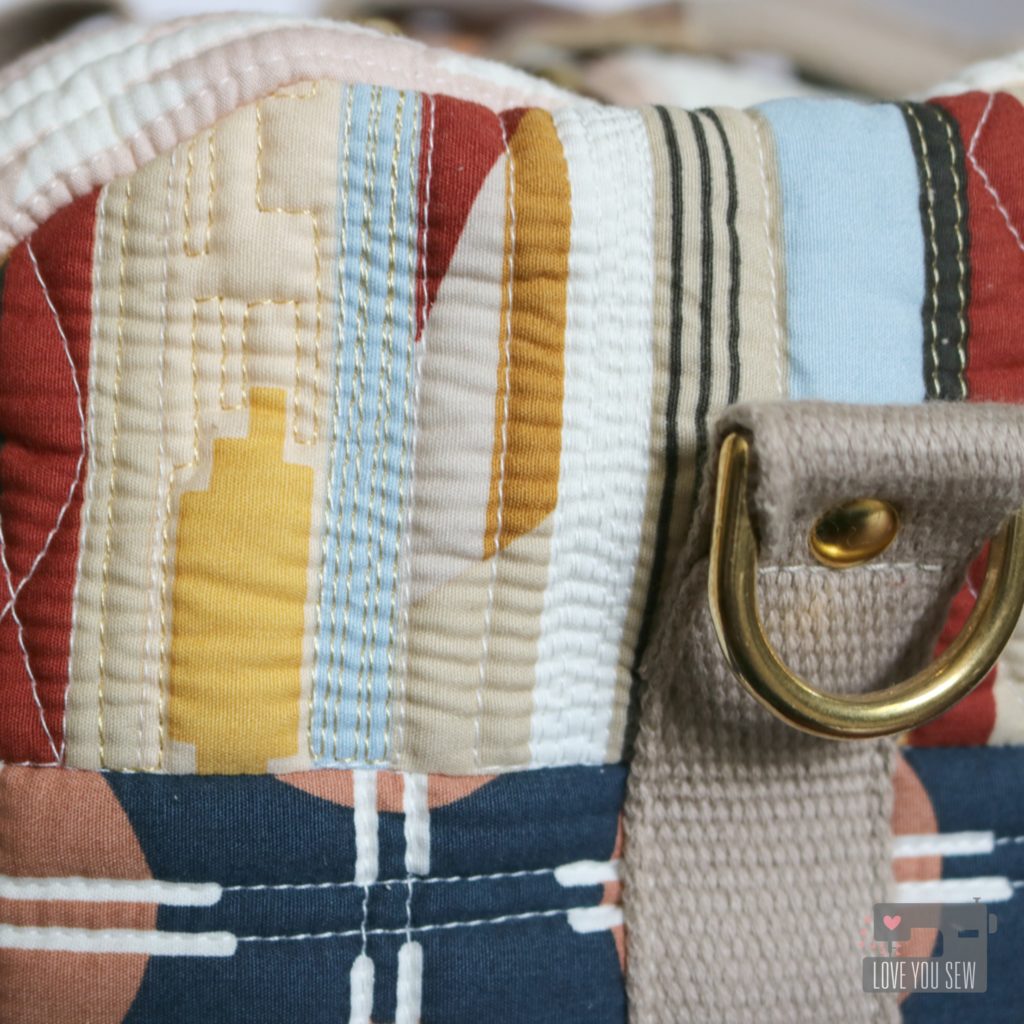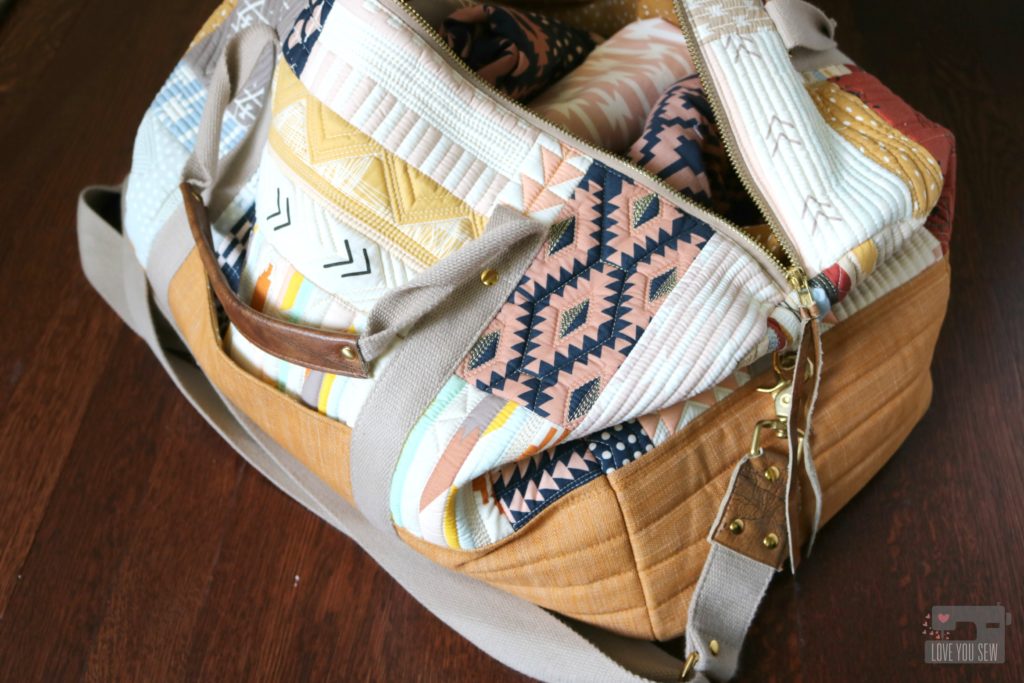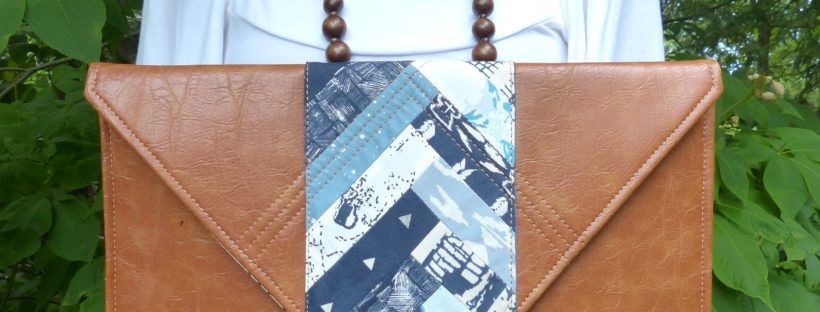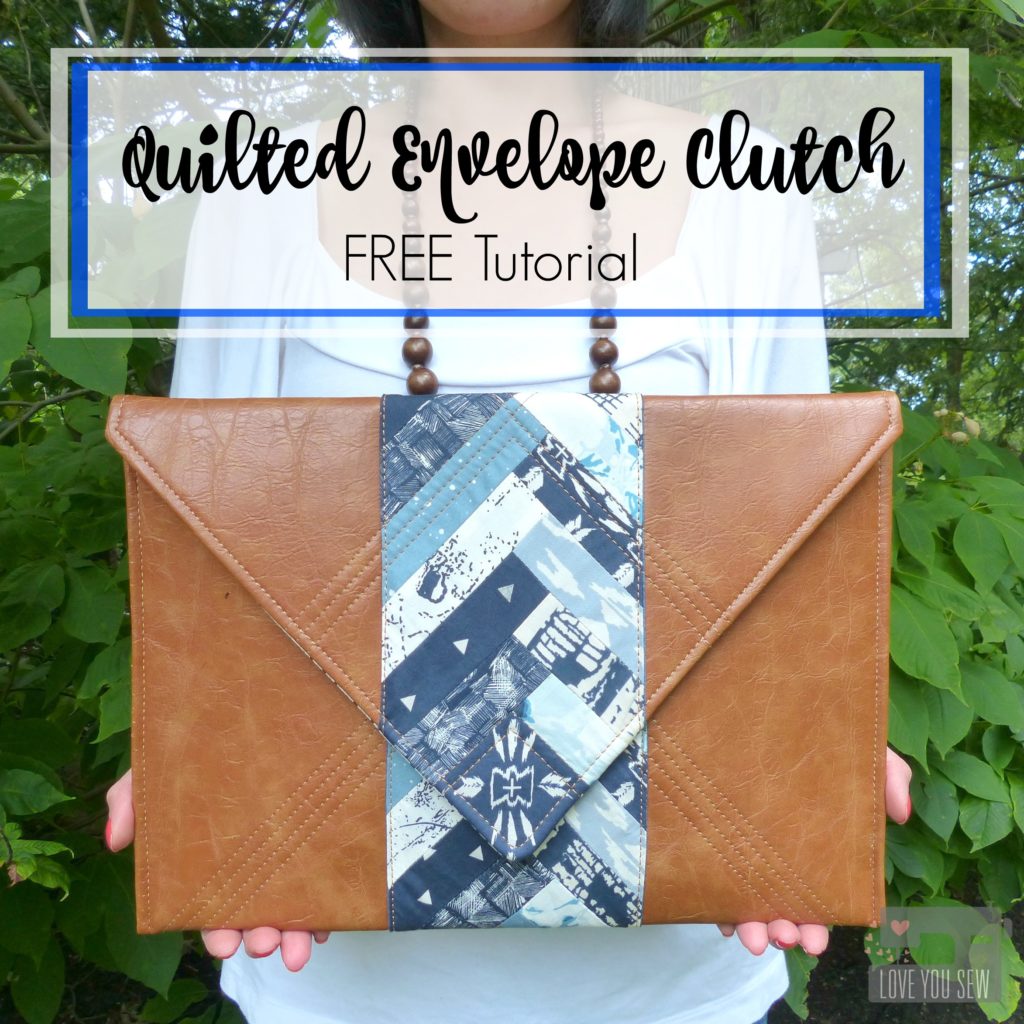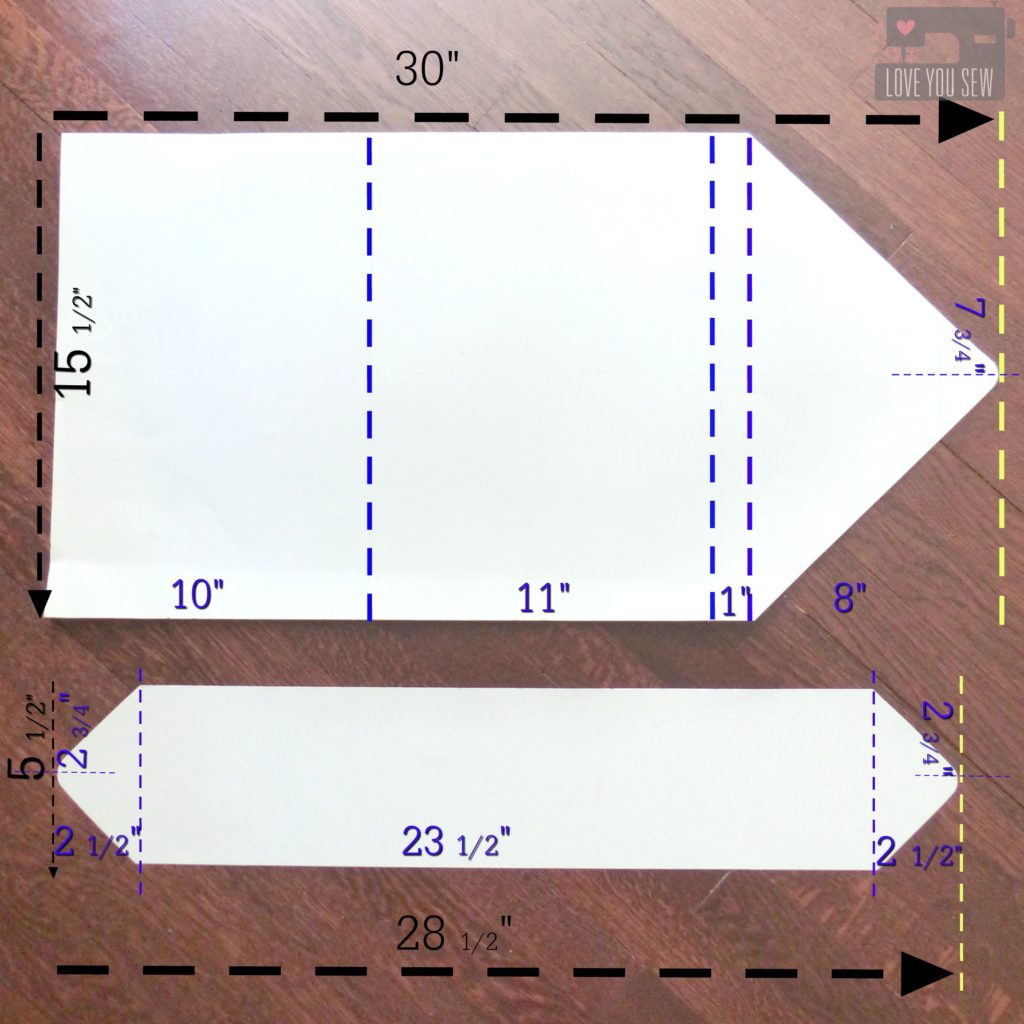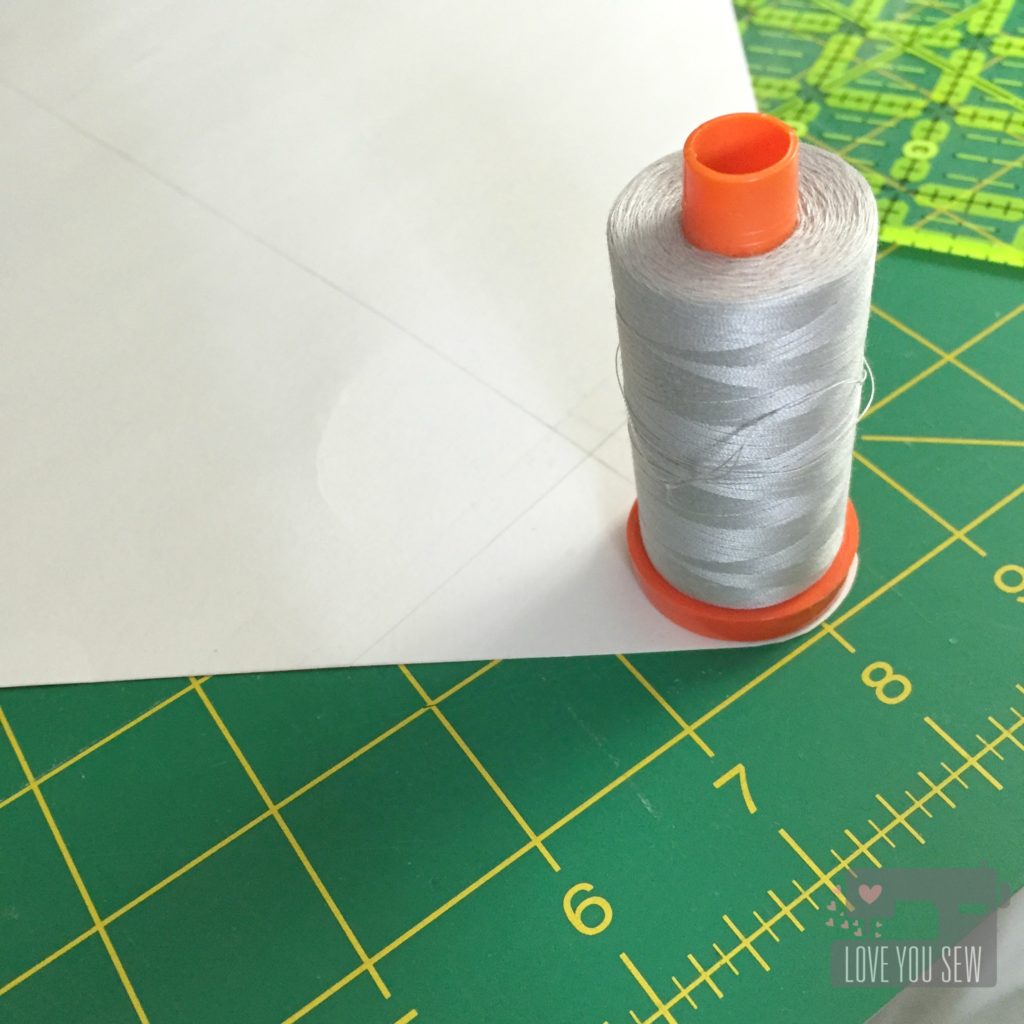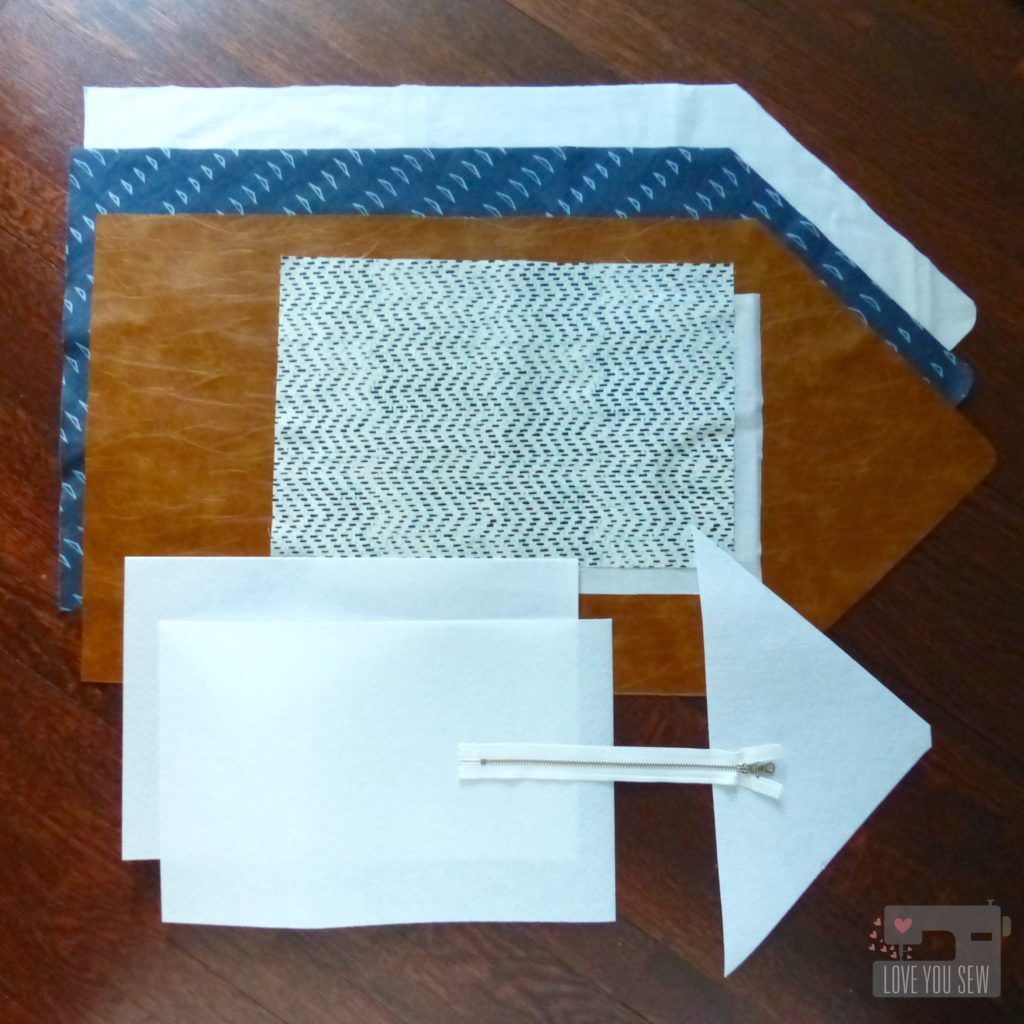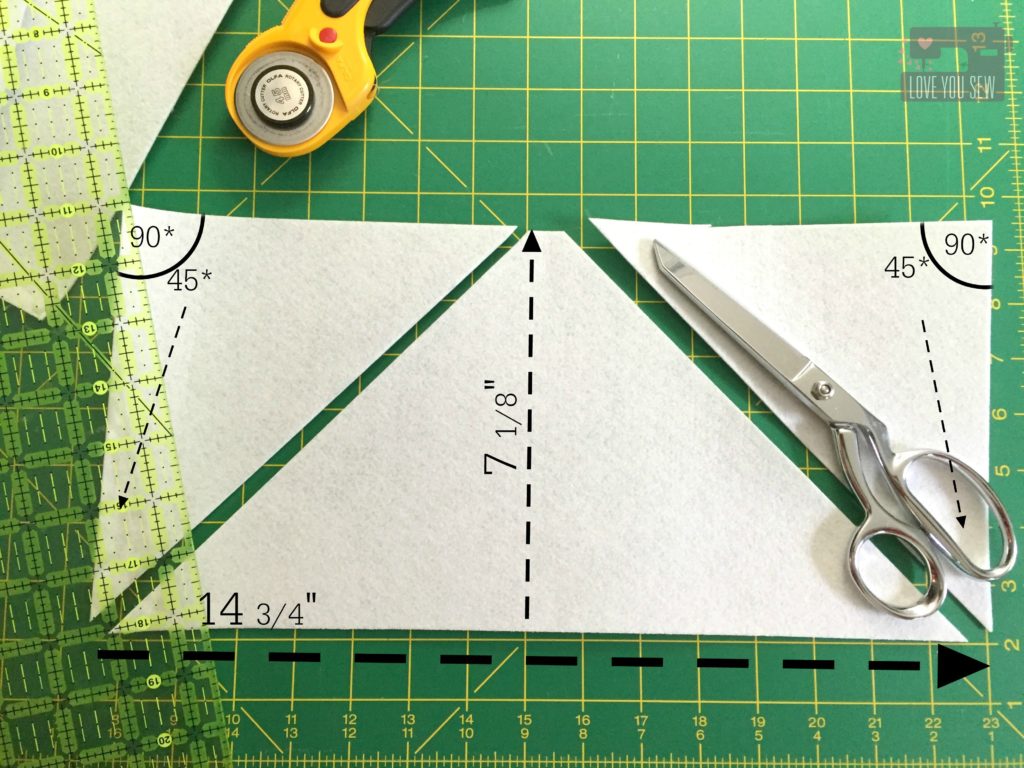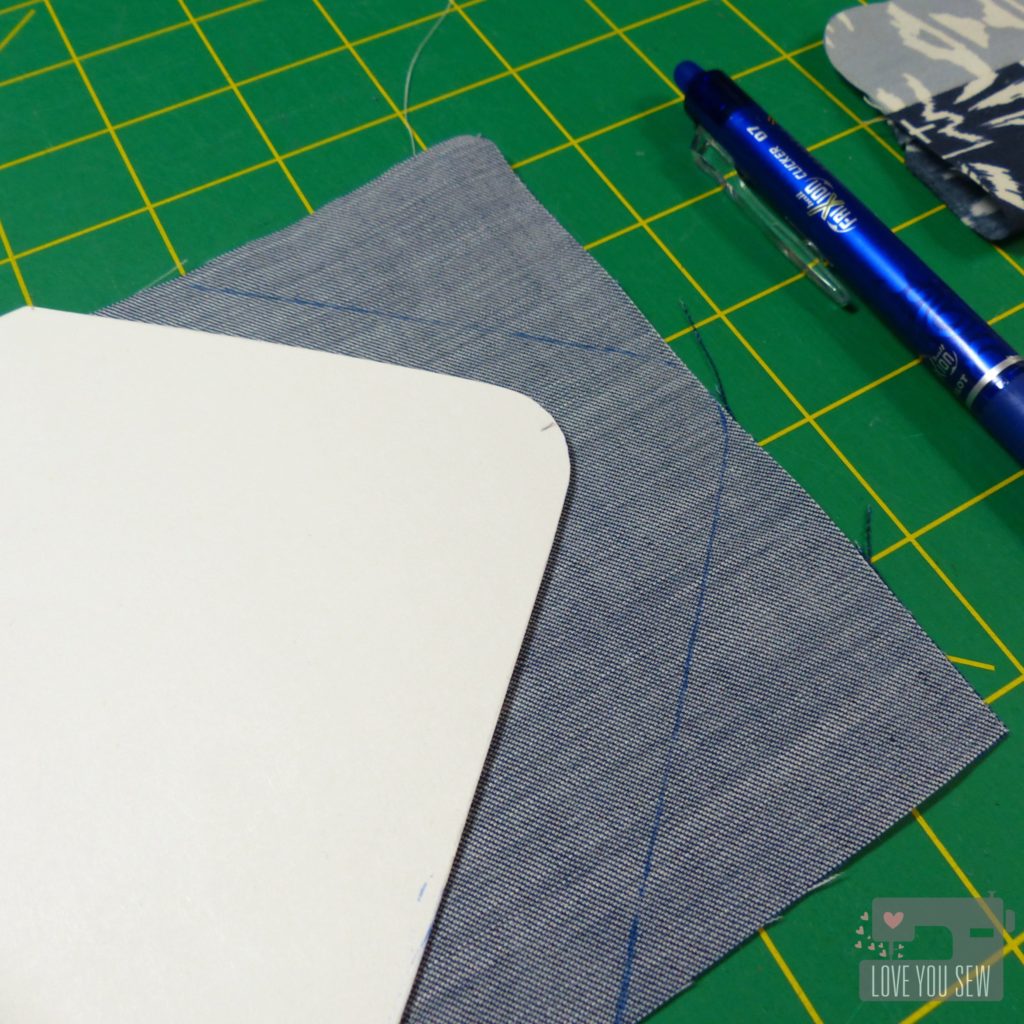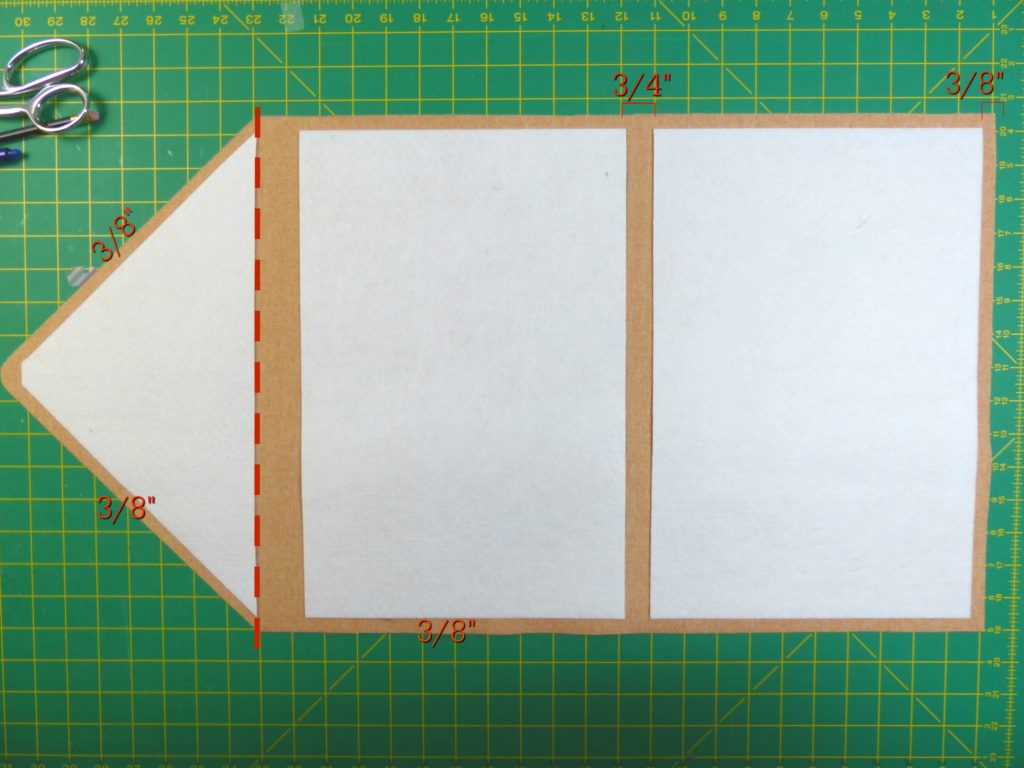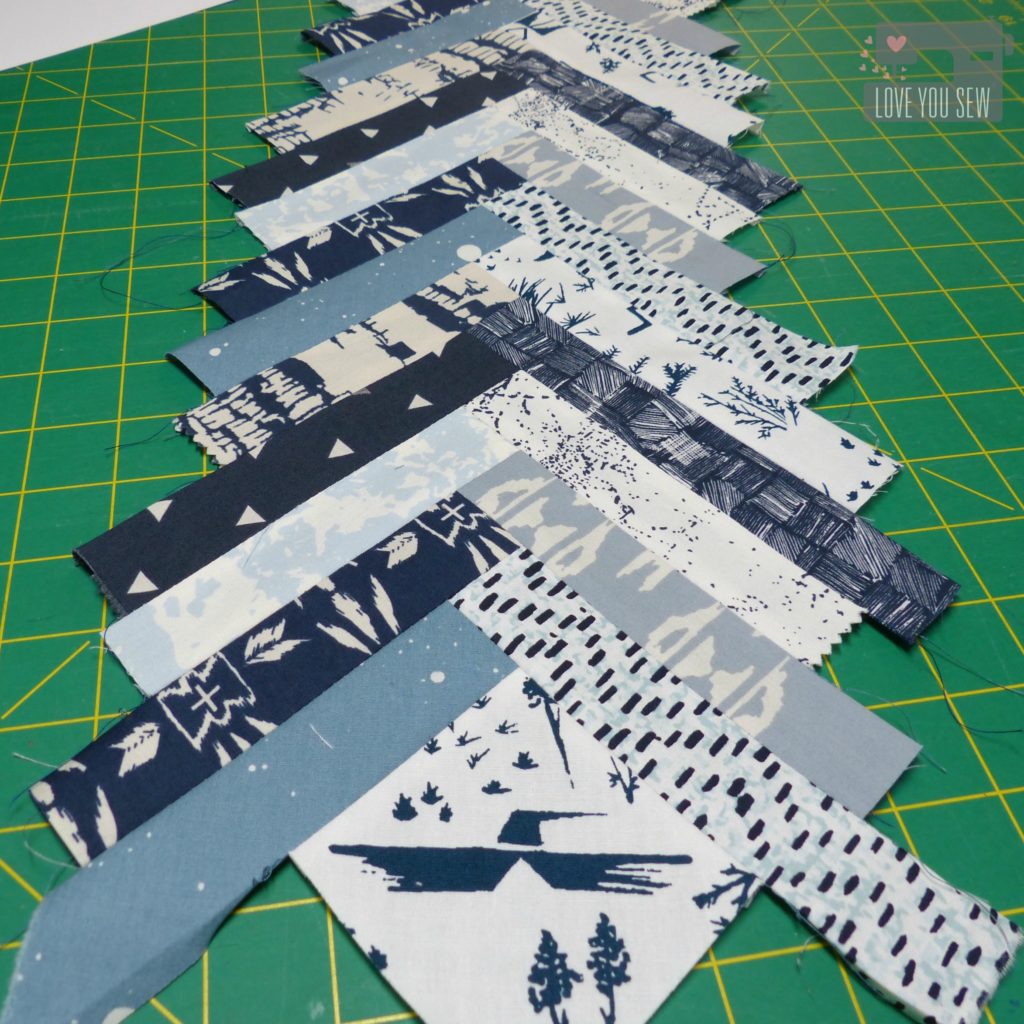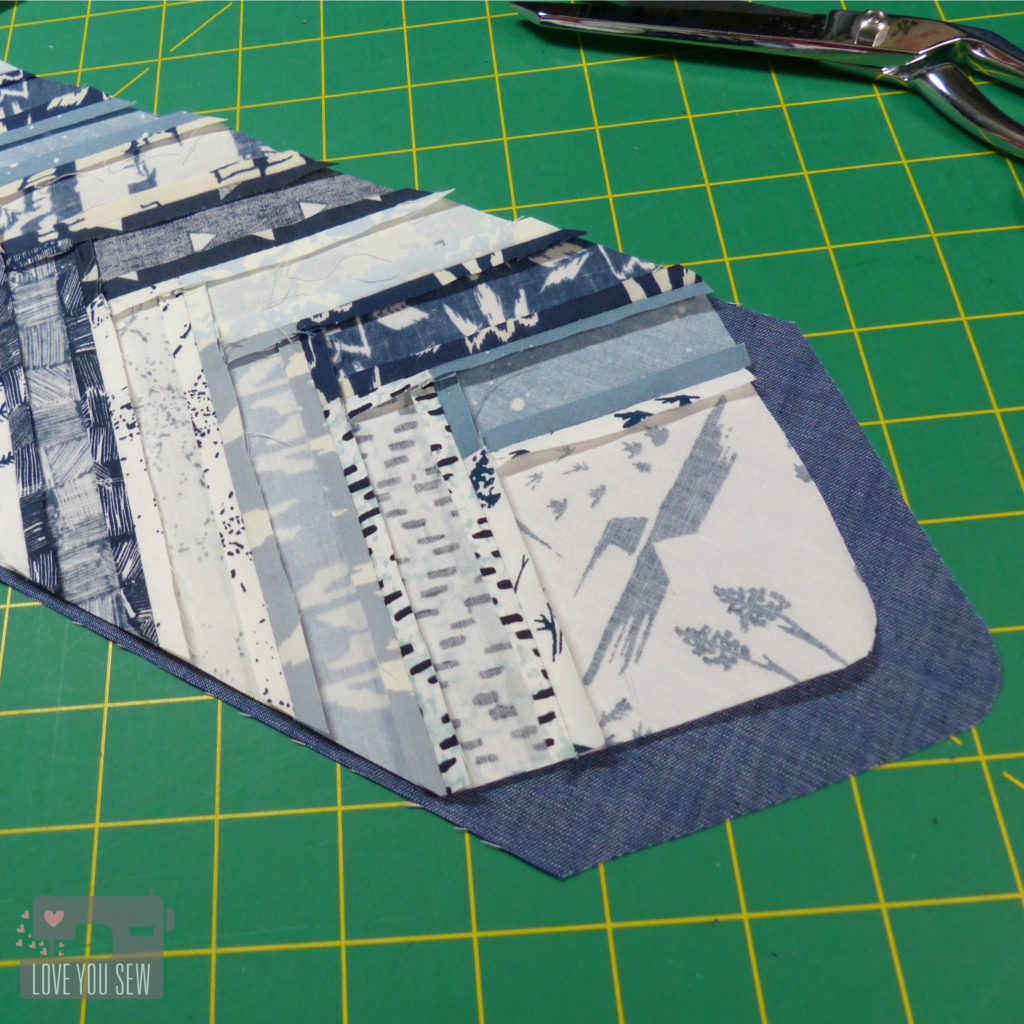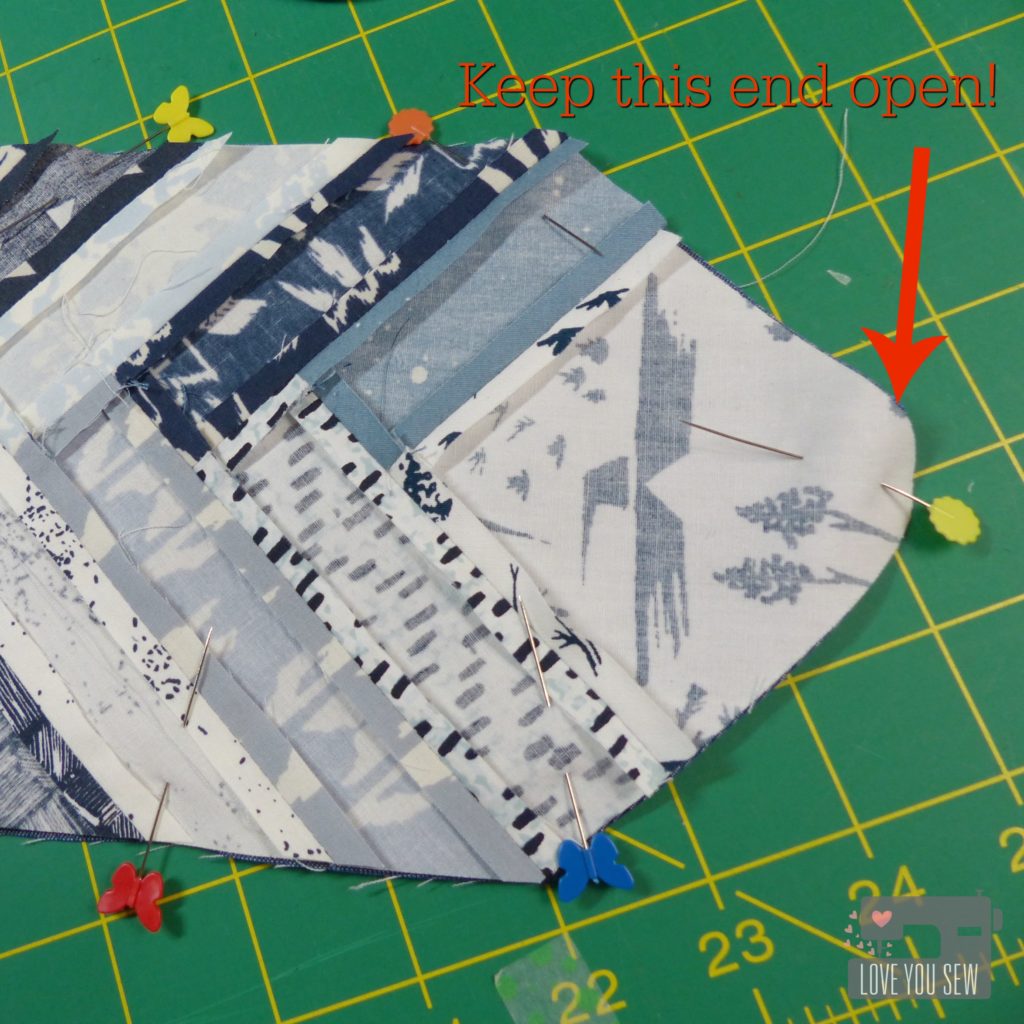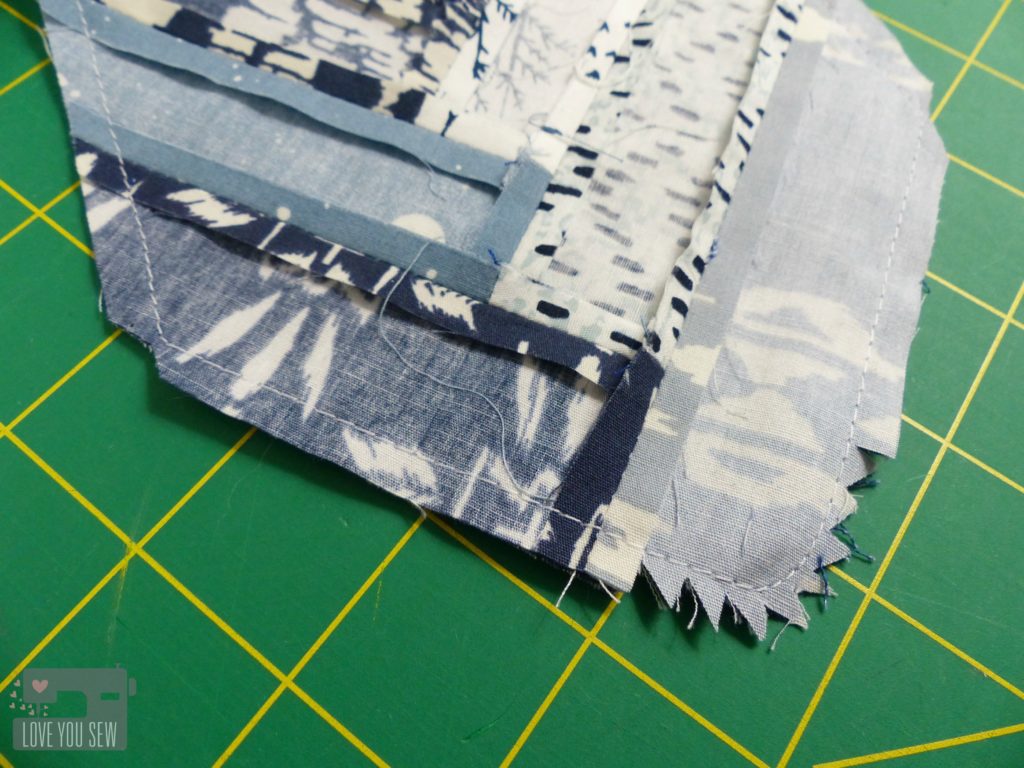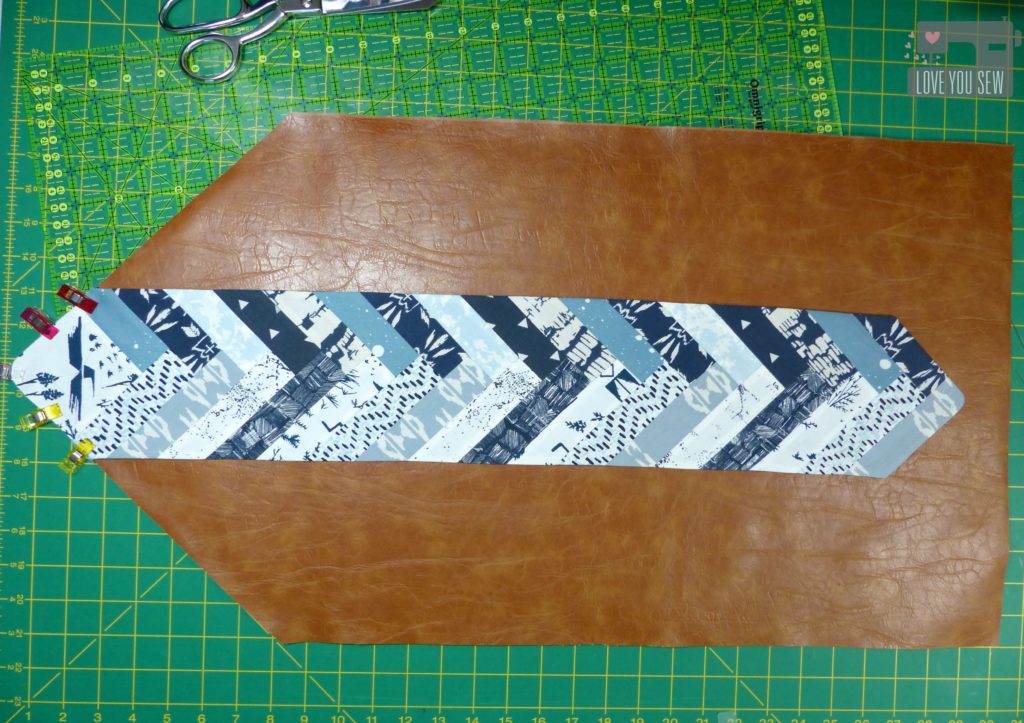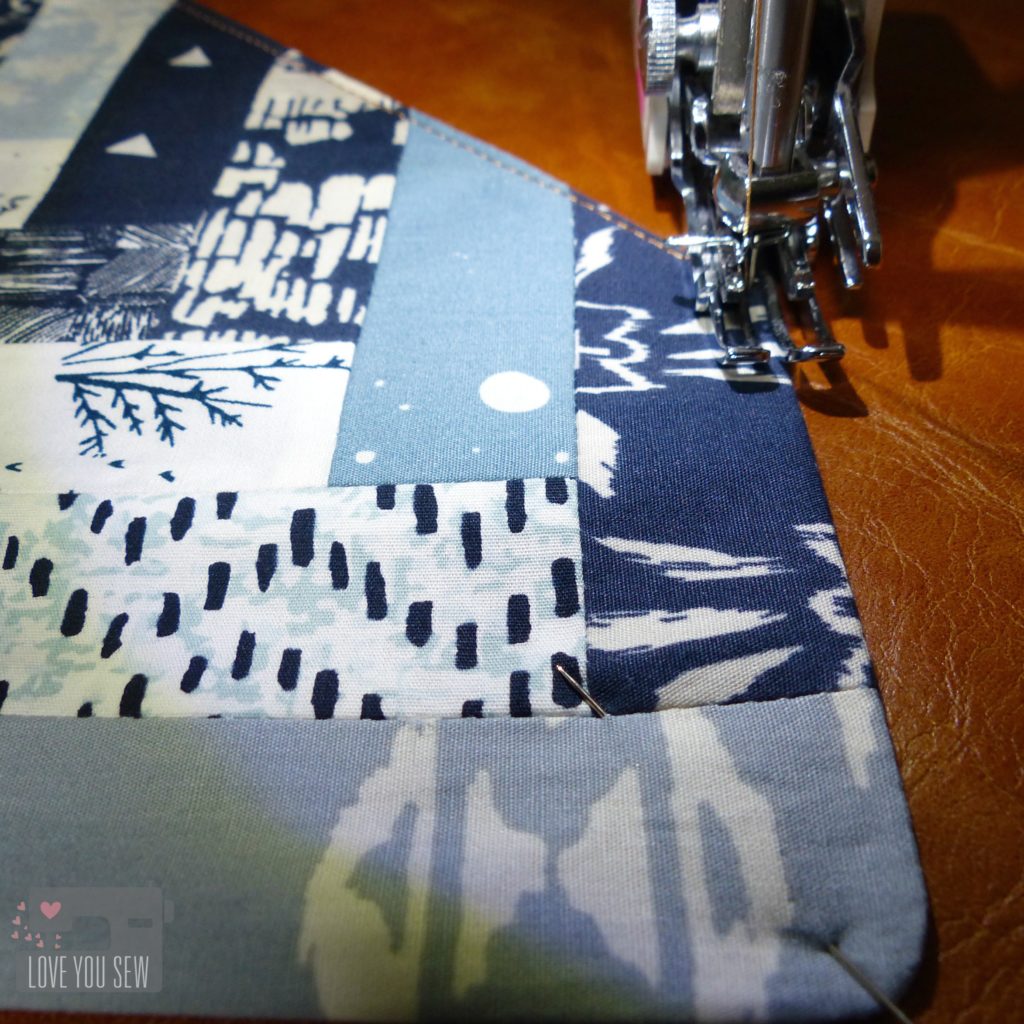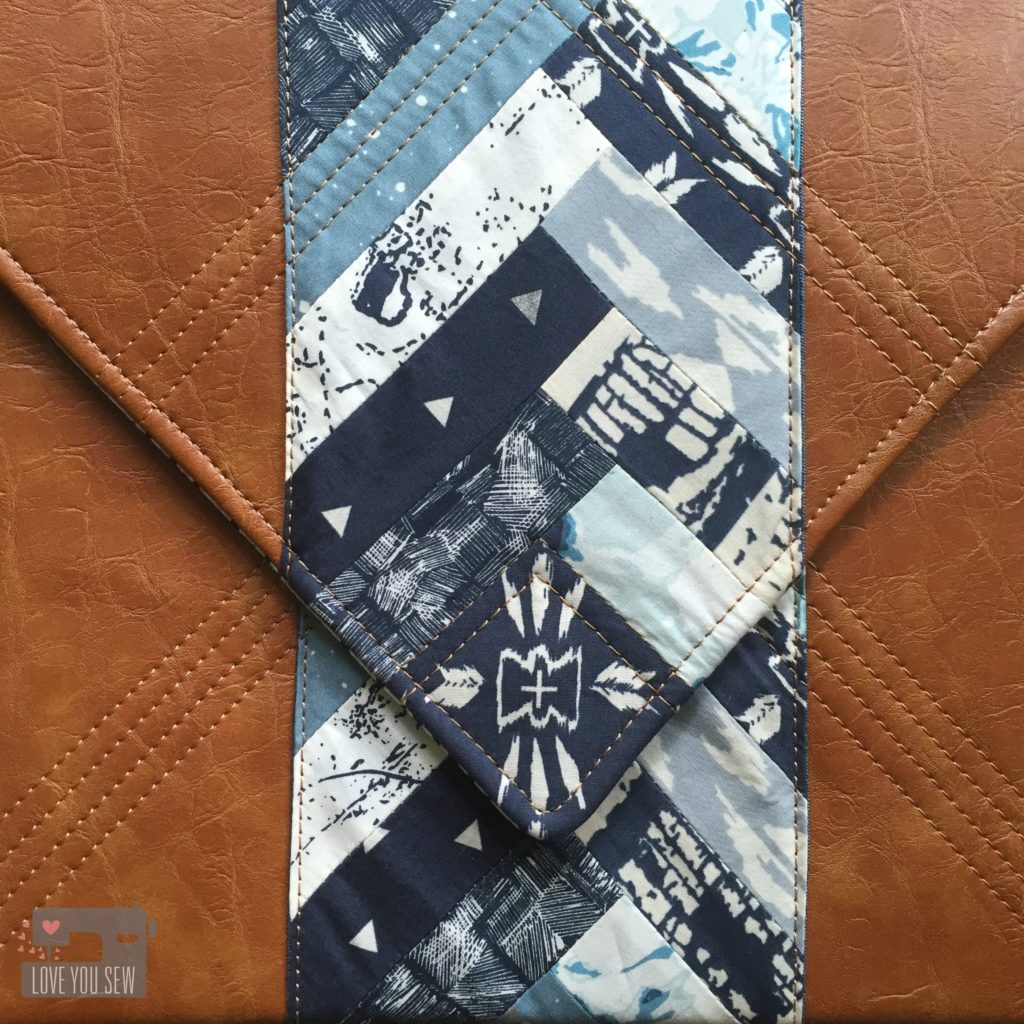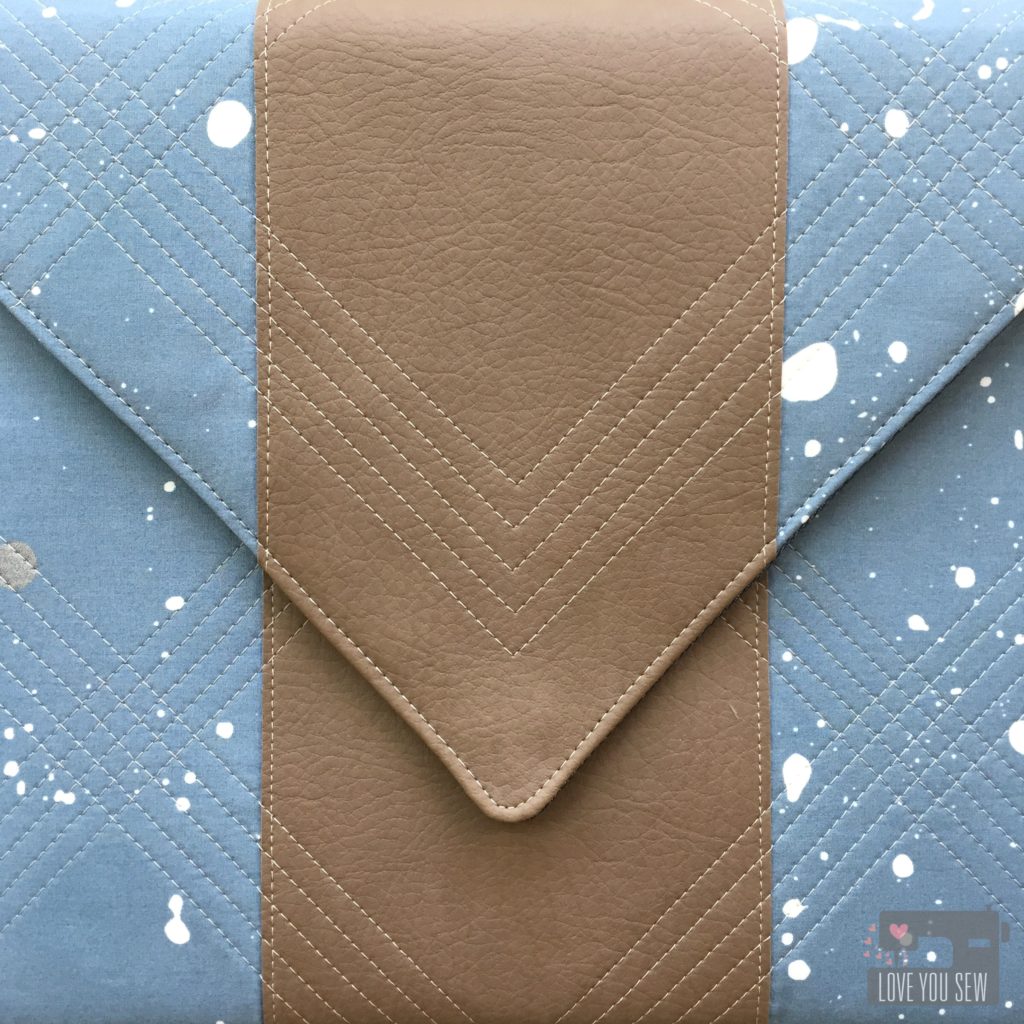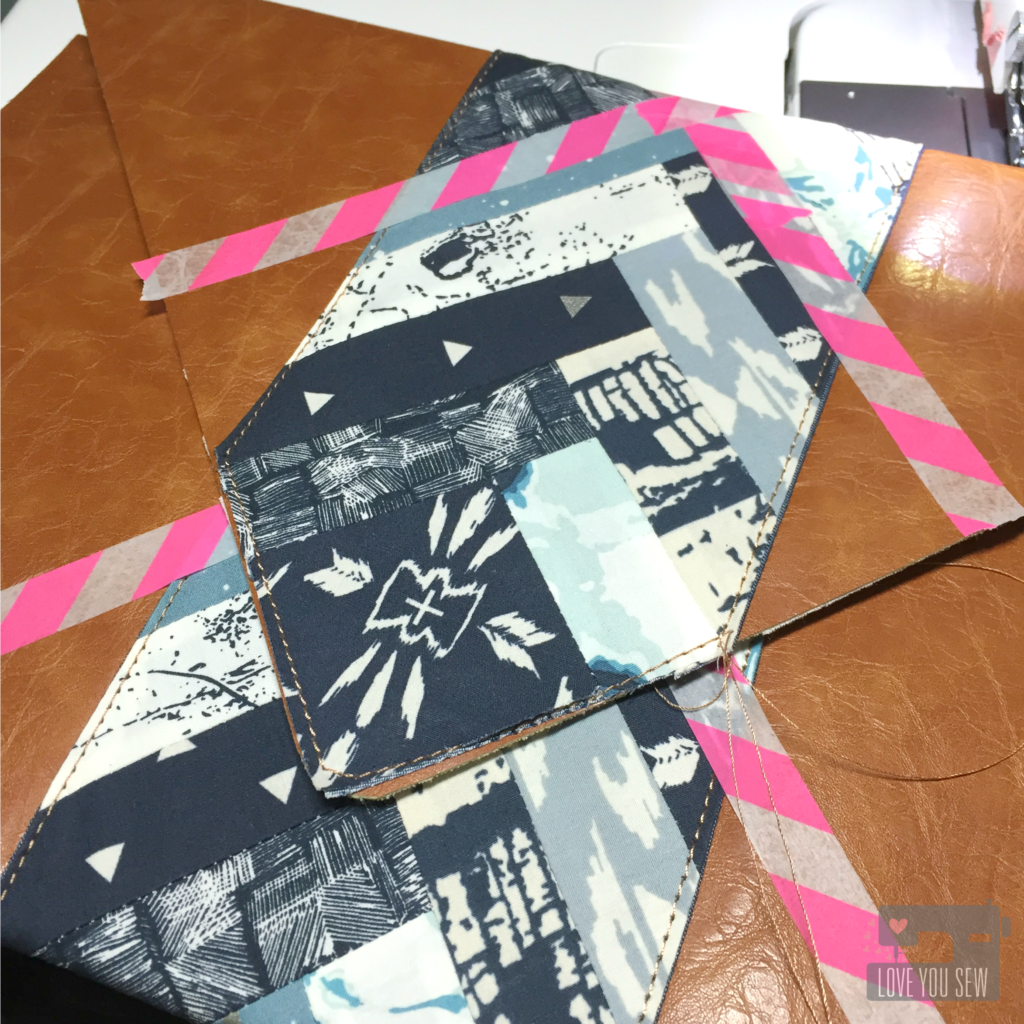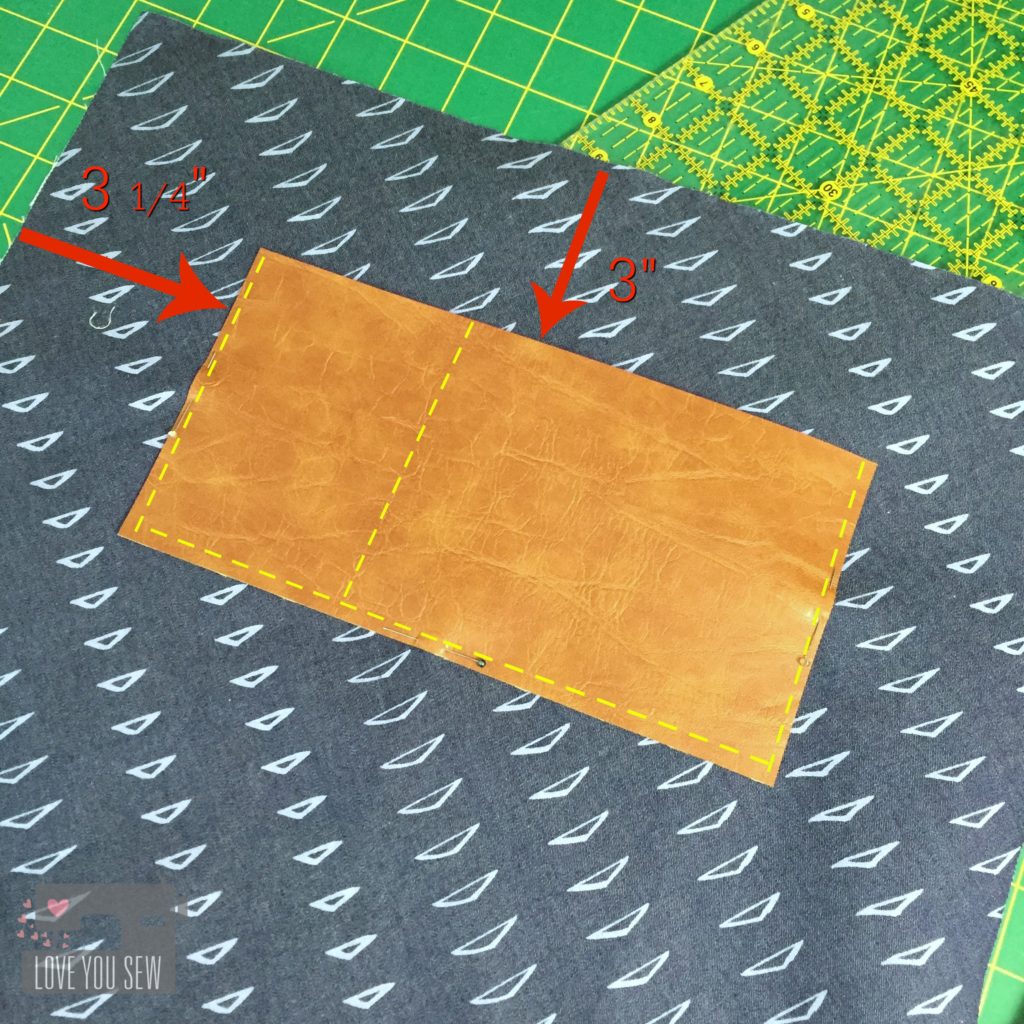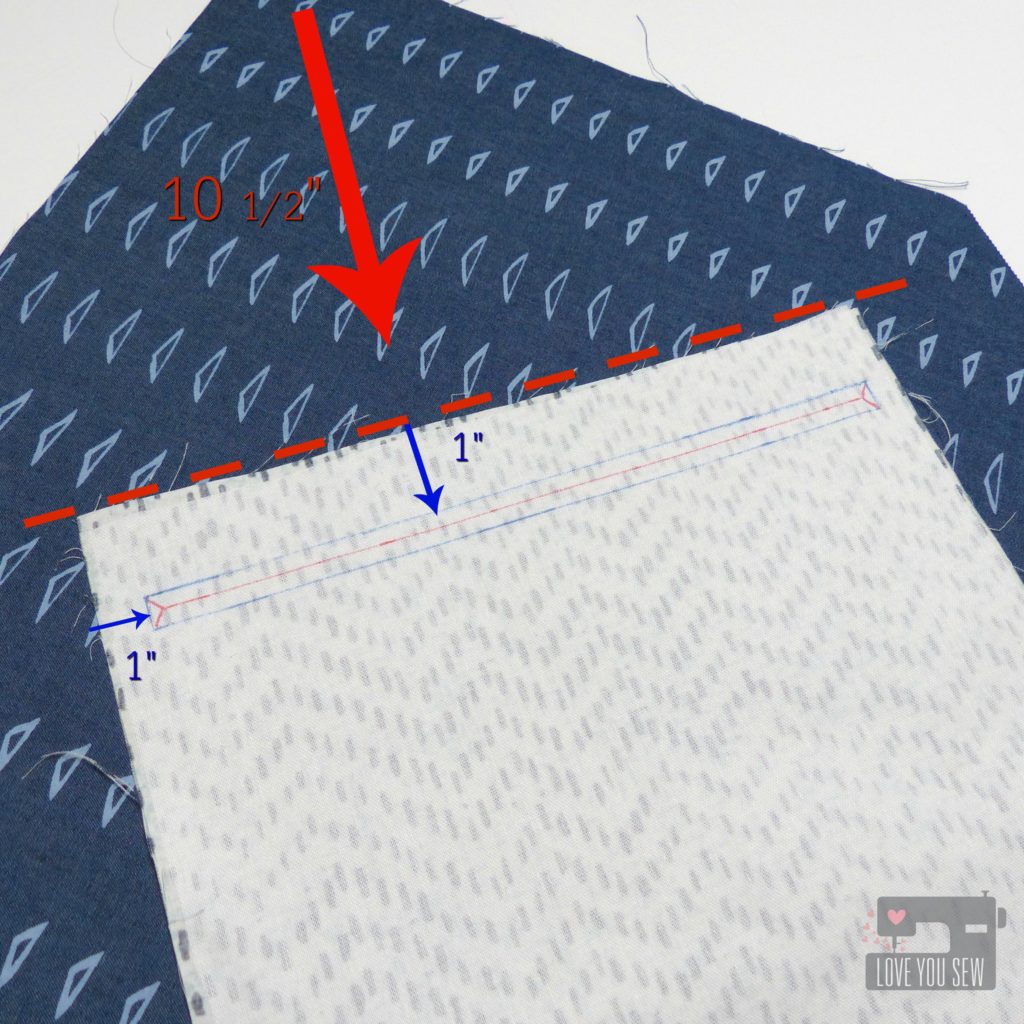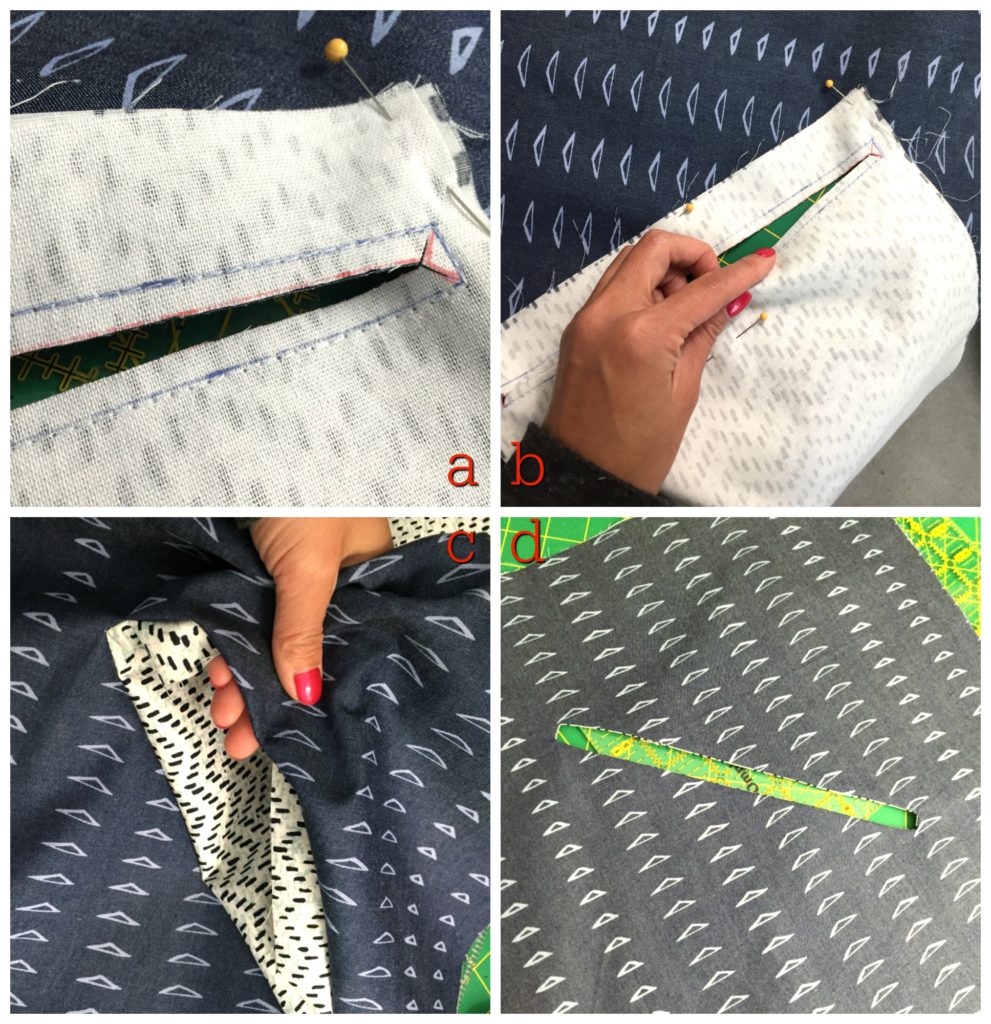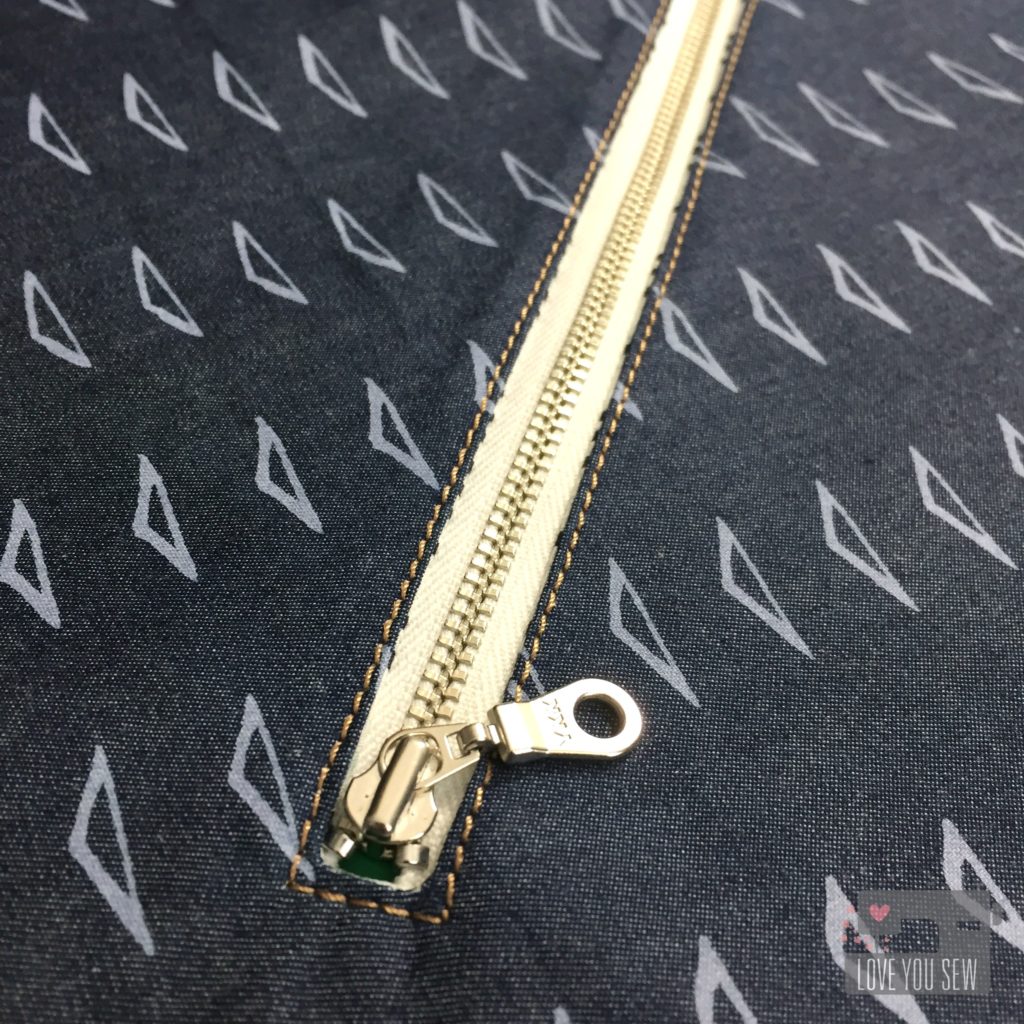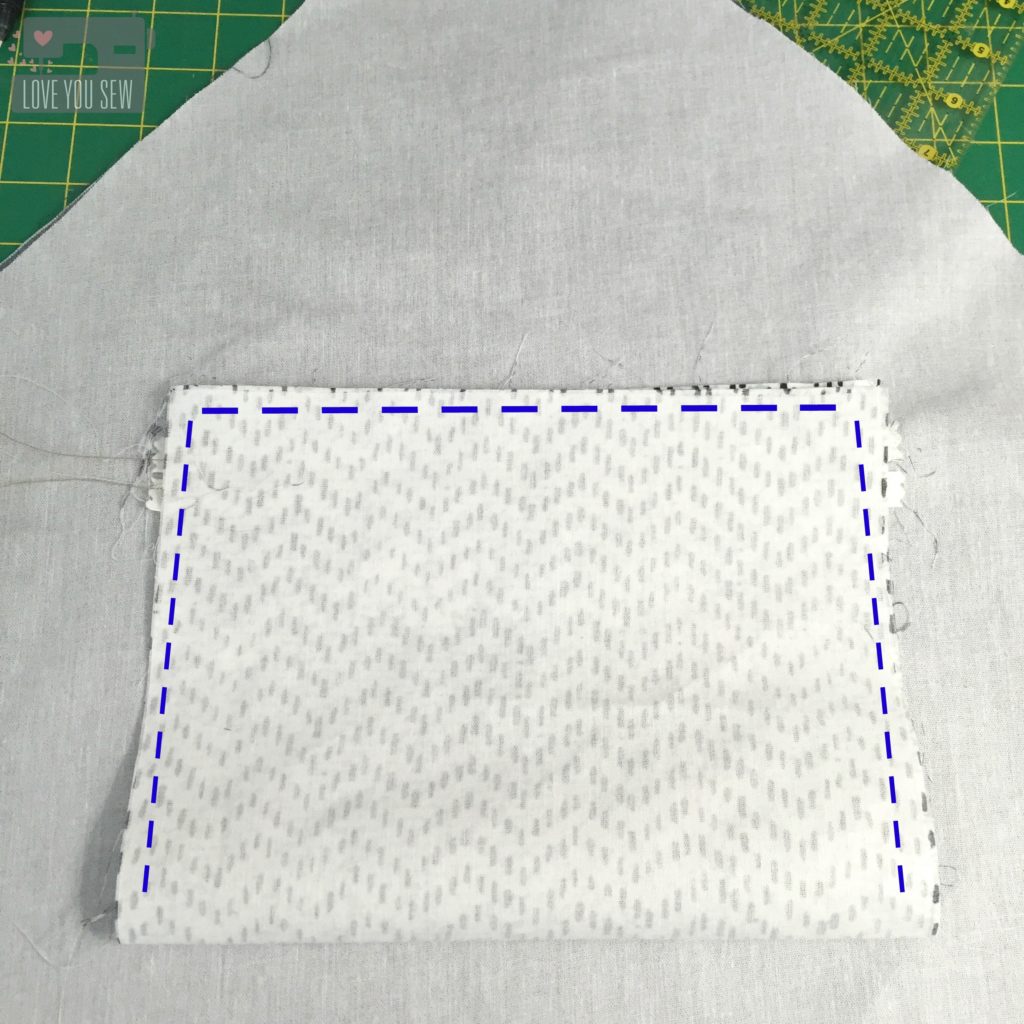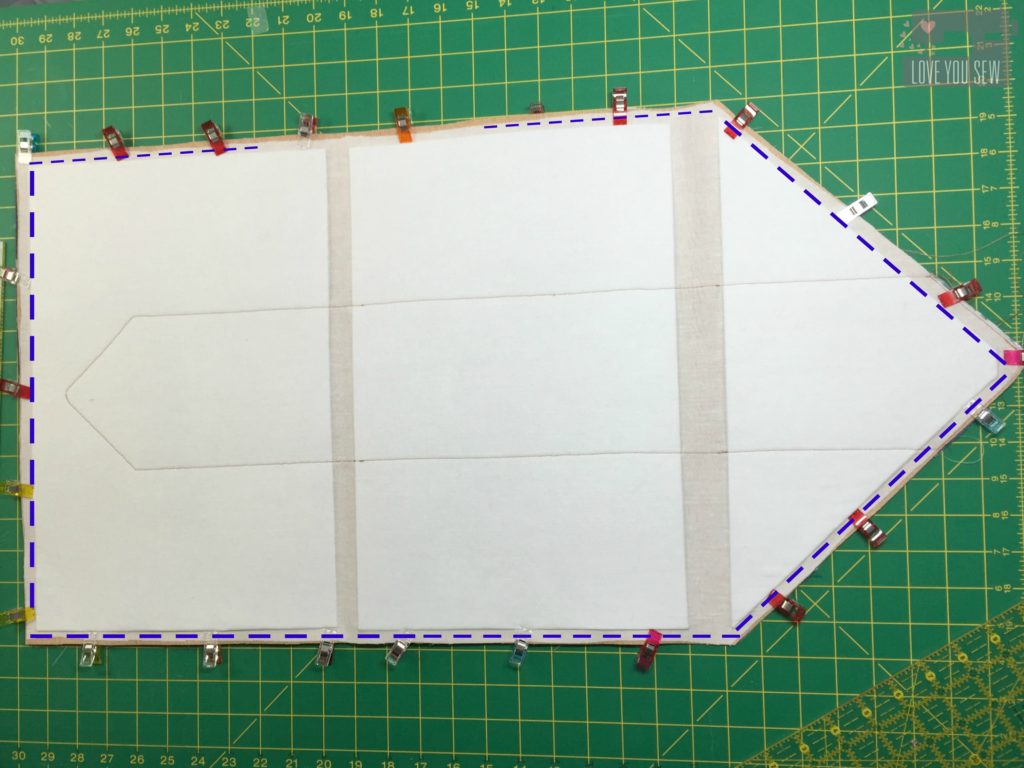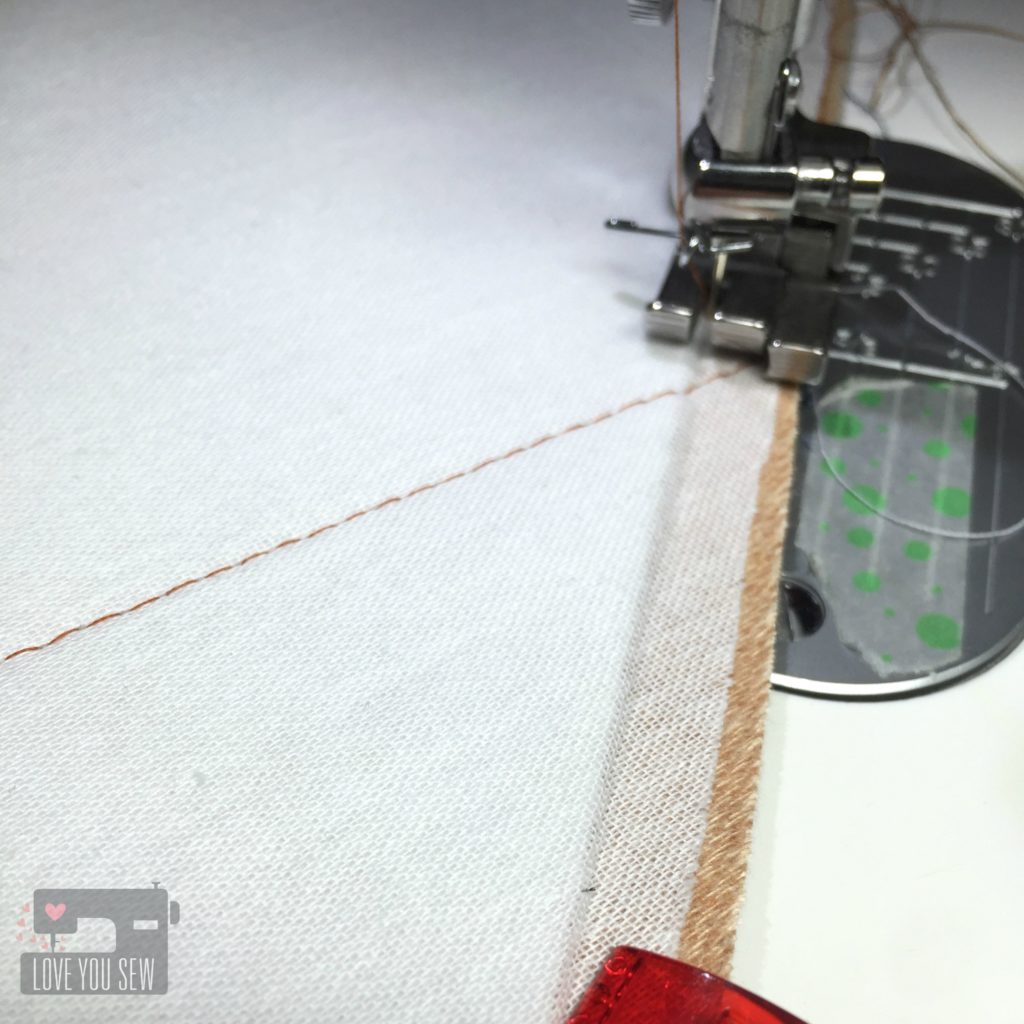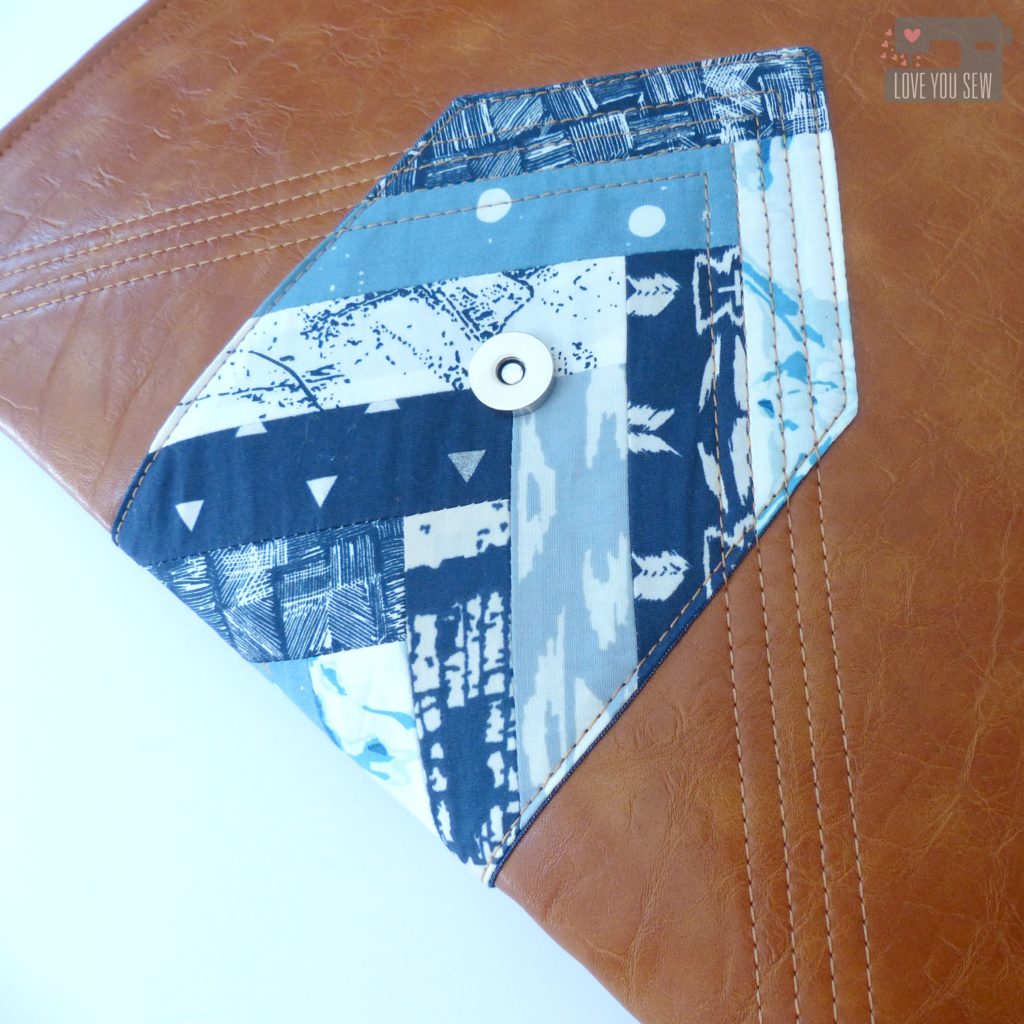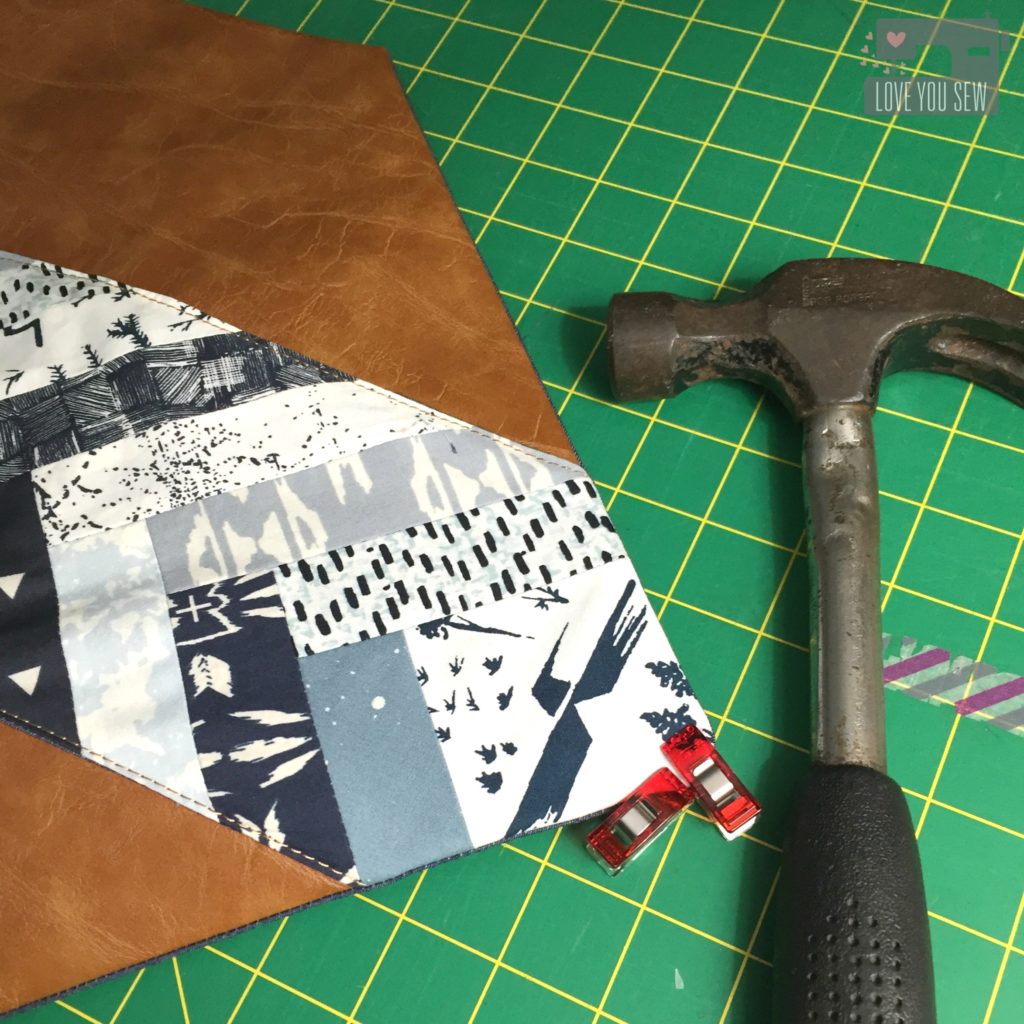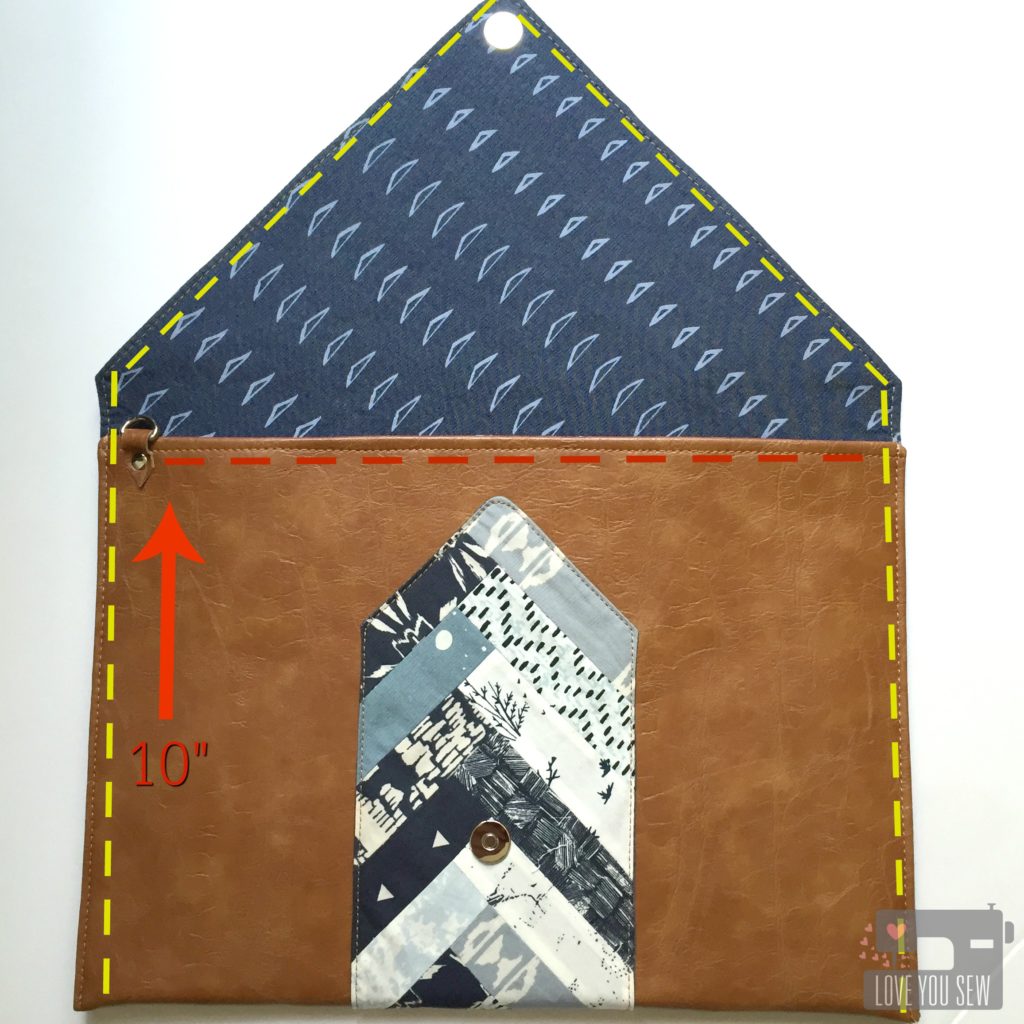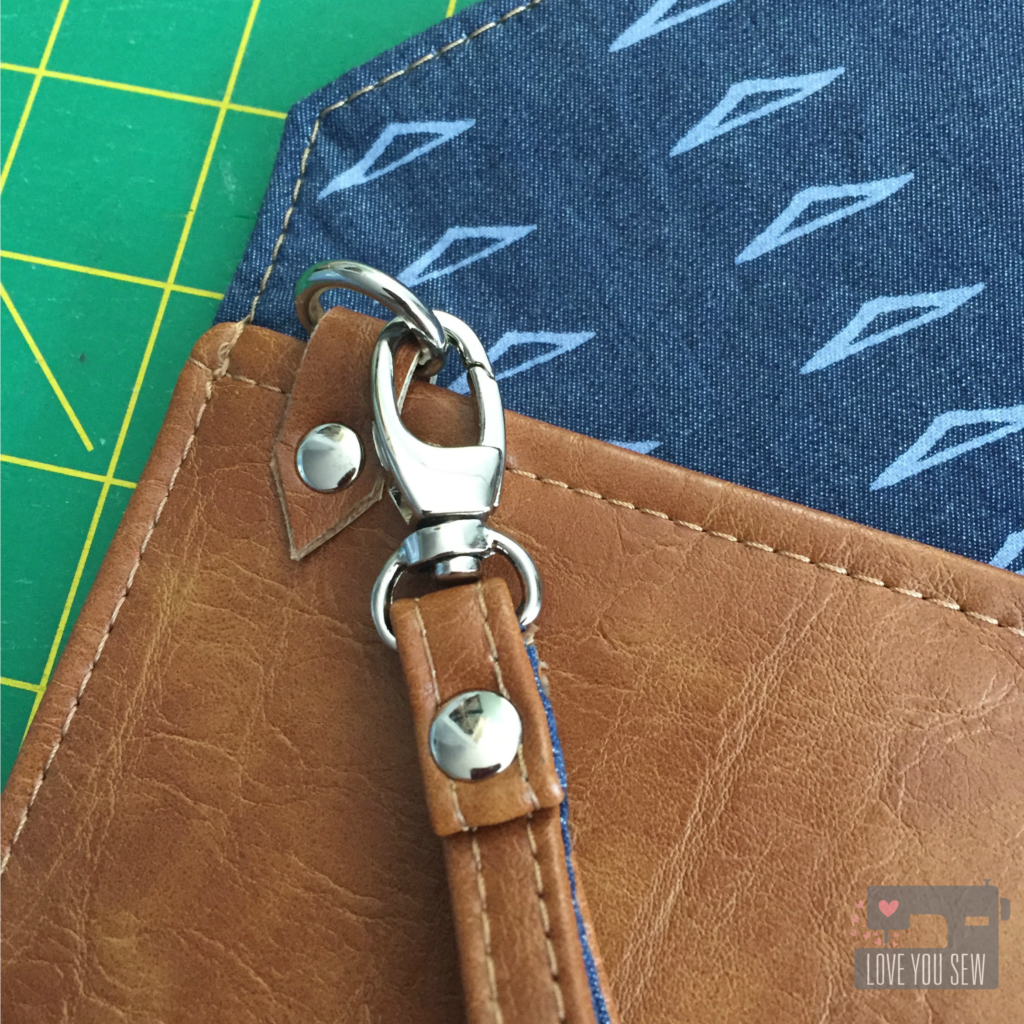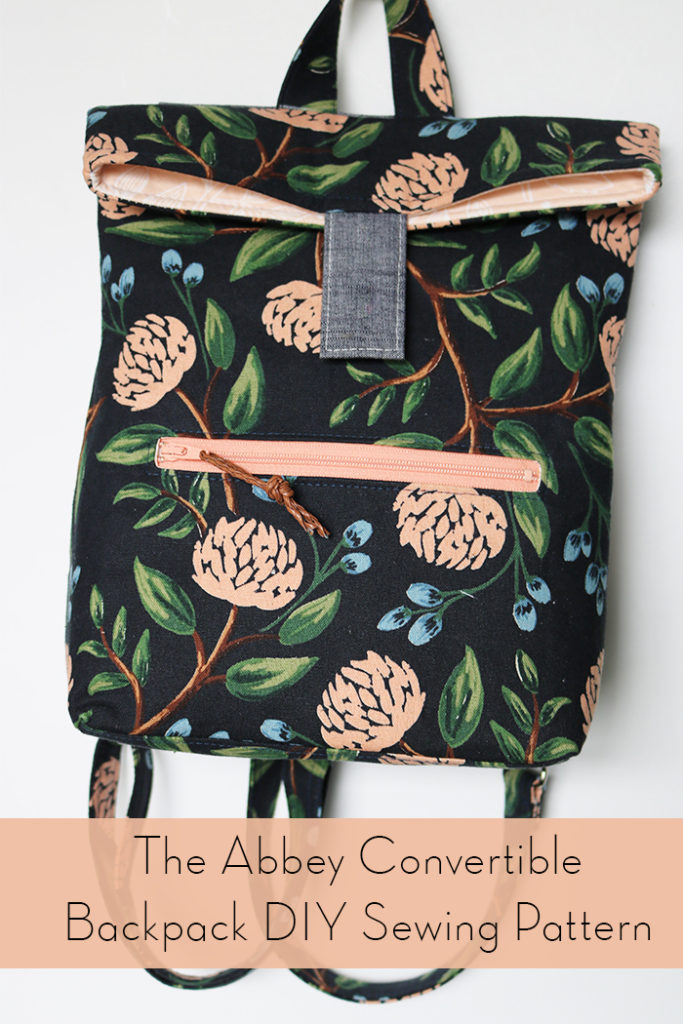
I’ve been on a long pattern writing break and look at me….I have two out in less than a month! It might be all the inspiration I’m feeling or maybe it’s the fact that I’ve learned quite a bit more about designing now 🙂 It really is a combination of all the above along with clearing my plate of other sewing commitments so I can focus! You can check out the FREE Kelly Waist Bag pattern just released a few weeks ago here and keep on reading for the long awaited Abbey Convertible Backpack…
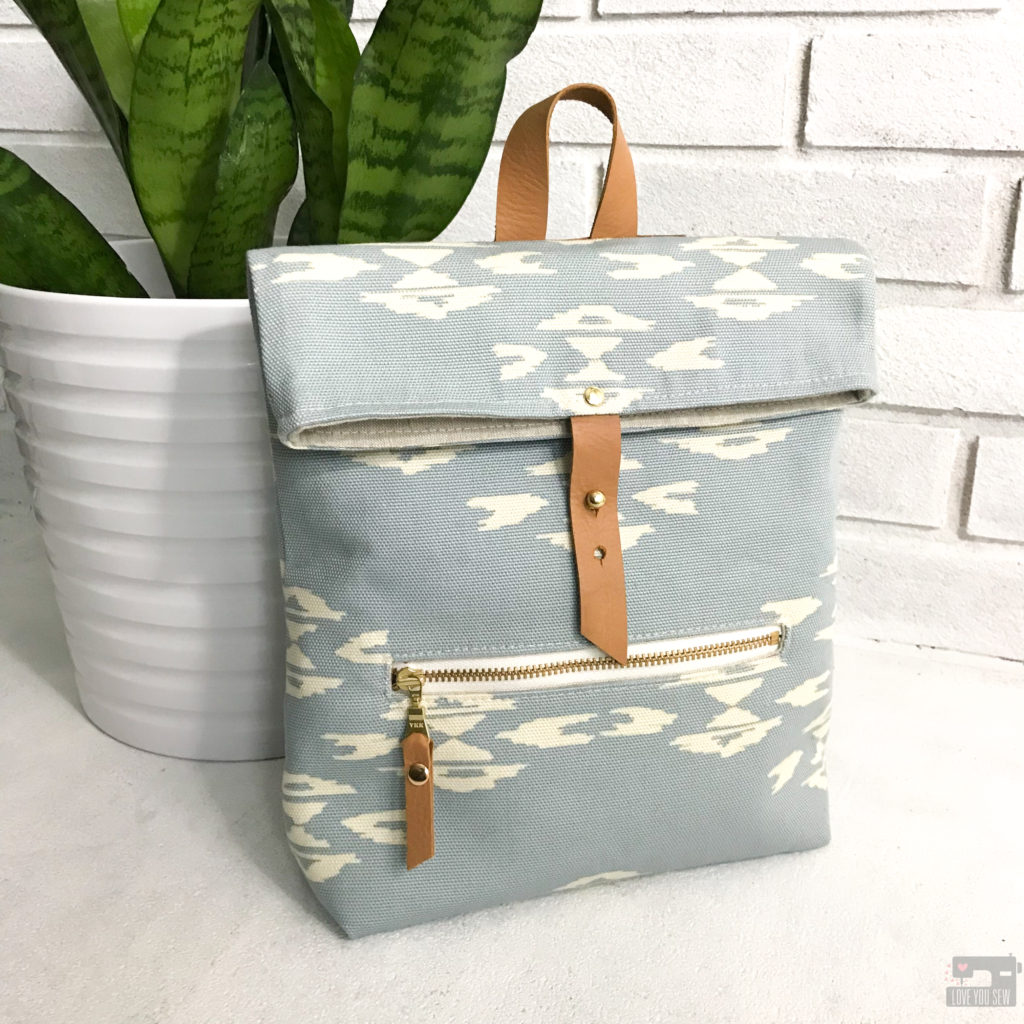
At the end of 2017, I was looking for a fun bag idea for my toddler niece. But since she’s a little fashionista, I wanted to make her a “non-kid bag” and more of an “adult-bag”….just in a miniature size. With boho style hot at that minute, I remember seeing so many hiker style backpacks around with southwestern prints. I had this great canvas fabric in my stash from April Rhodes and knew it would be perfect for my niece.
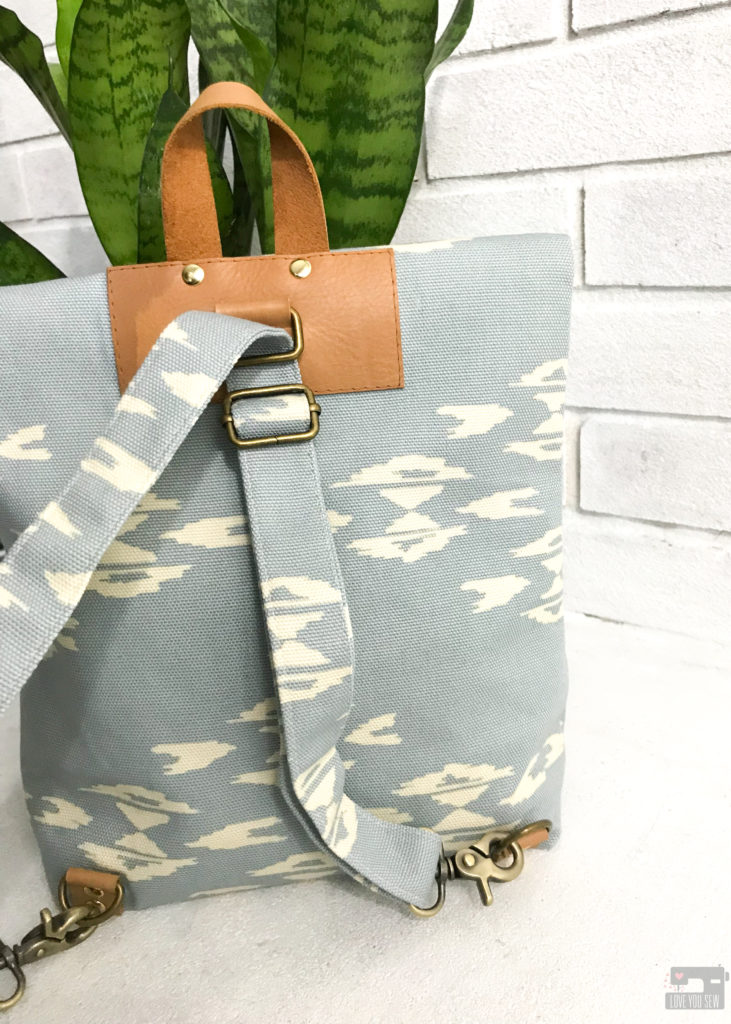
I made this little backpack just thinking it would be a one-off project — that was until I posted it on my Instagram. That’s when all the comments and inquiries flooded in. I had at least half a dozen people wanting to buy it. But no, it was only for my niece. <3 Although I didn’t want to sell the actual bag, I knew I had a great design…especially as a kid-size bag that’s modern and something an adult might like….
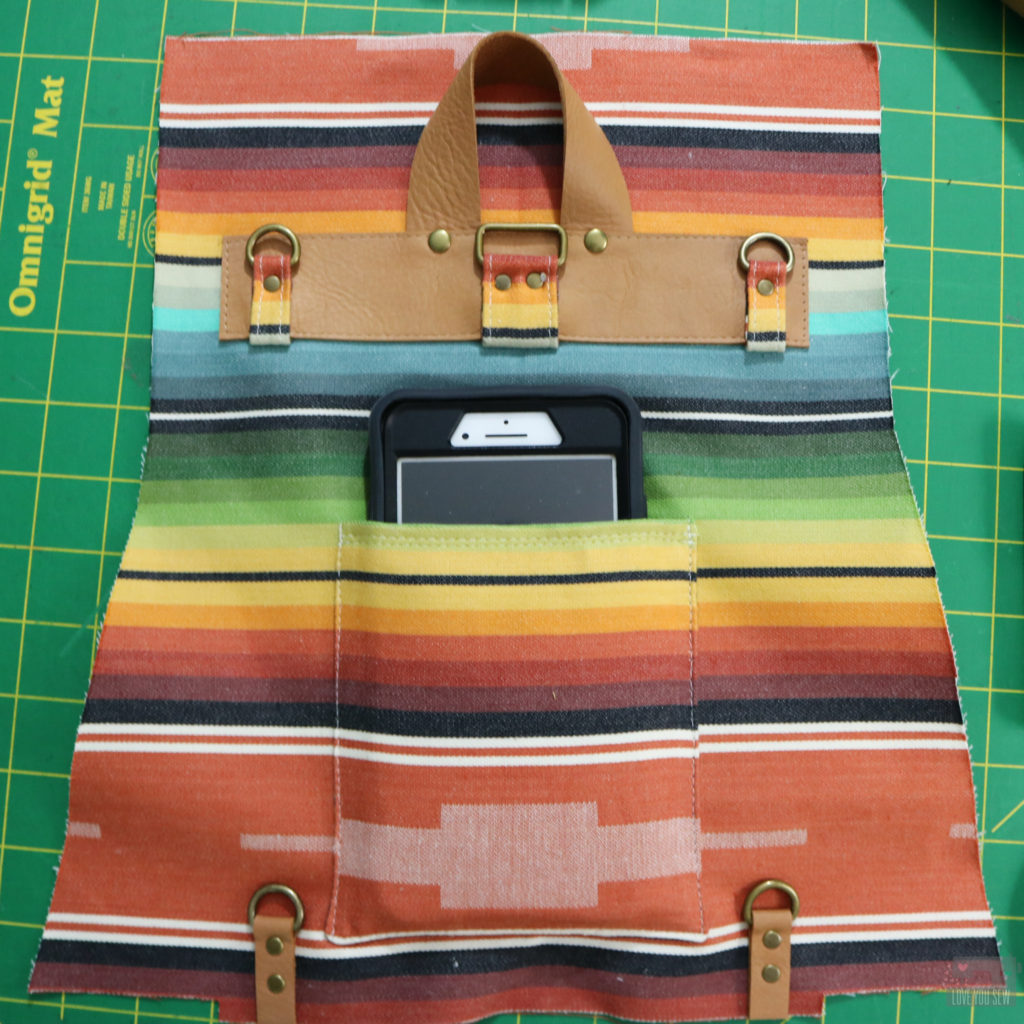
Fast forward a year after learning to use some proper drafting software and I was set to tackle the longest and most involved bag I’ve written to date. From the first design, much has changed. The body is slightly larger and more pockets have been added inside and on the back. The most significant change is the additional hardware to make the Abbey a completely convertible adult bag too!
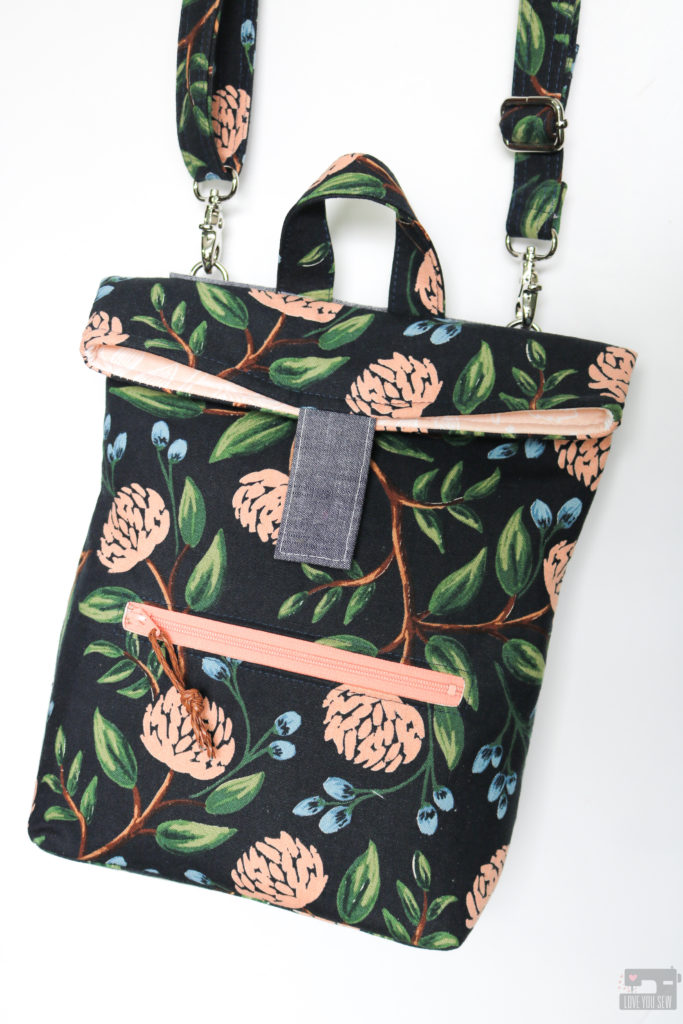
With a quick switch of the swivel clasps from the lower connectors up to the top ones, the backpack changes to a cross-body! This allows the Abbey to be such a versatile bag and can change with you depending on the situation. ‘Sometimes you just want your bag out of the way and sometimes you need all the access to it — I get it! Additionally, the Abbey also has these features:
- Convenient front zipper pocket for keys, chapstick or change
- Magnetic snap tab closure for easy access to the main compartment
- Back slip pocket – perfect for your phone, boarding passes or concert tickets
- Interior zipper pocket to keep valuables safe
- A generously sized adjustable strap which can be used for the backpack or crossbody
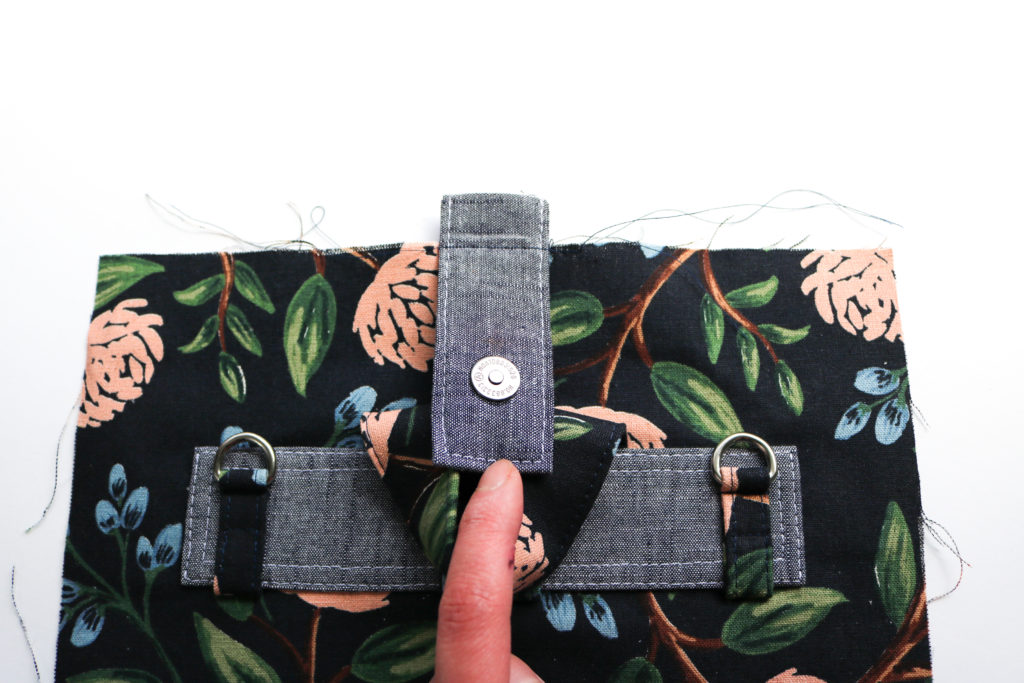
As a bag-maker, you will love having this unique design which you can (of course) keep, but also gift to friends and family, both young and mature. I’m thinking some mommy and me versions would be so cute! You will also learn some great techniques such as:
- Installing magnetic snaps (with my tips to prevent the prongs from wearing through your fabric!)
- Using three different types of interfacing for a structured, yet pliable bag
- Creating zipper welt pockets
- Making an adjustable strap
- Construction style which leaves a clean and seamless base.
- And I’m already working on some hacks to leave you with more options and ways to customize each bag you make 😉
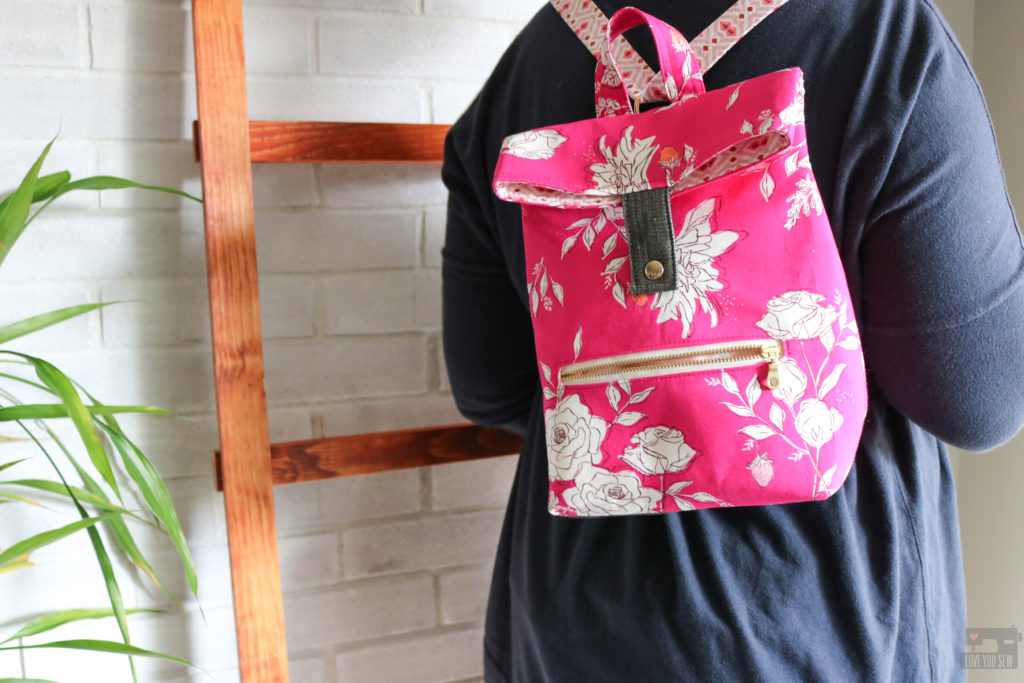
For some inspiration, you can check out my Sonata Fabric Showcase Tour here. These were both prototypes as I was testing out interfacing combinations and still checking out which features to keep in the pattern.
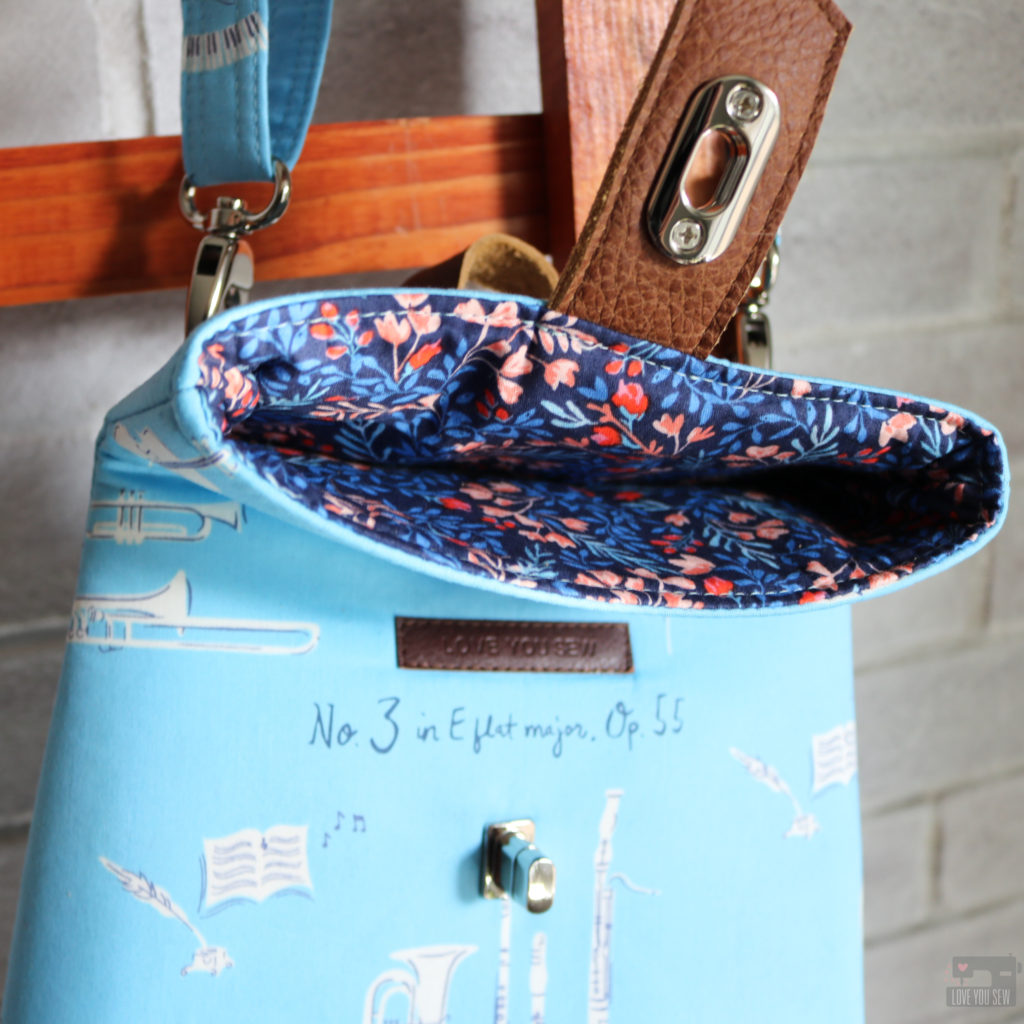
- The blue bag used foam interfacing which I thought was just too much. The bag was not able to fold very well. However, it uses leather accents which I do include in the cutting table. (I will write a blog post for the zipper frame soon!)
- For the pink bag, this was a test to see how quilt cotton would hold versus the recommended canvas. It still had great shape and pliability, but some structure is lost. Once the bag is filled up, it’s not that noticeable though. This version is the lightest weight and great for using all of those cute quilt cotton prints for little ones.
If you need even more inspiration, you have to check out all of these amazing creations from my tester group. These ladies are absolutely amazing and I could not make this pattern without all of their help! You can click through each image below to direct you to the maker.
- Made by Jen Hall
- Made by Jen Hall
- Made by Tricia Stadelbacher
- Made by Tricia Stadelbacher
- Made by Jean Werling
- Made by Jean Werling
- Made by Mallory Hill
- Made by Mallory Hill
- Made by Nela Barrow
- Made by Neal Barrow
- Made by Yasmin Schmalix
- Made by Yasmin Schmalix
- Made by Tiahna Conrad
- Made by Tiahna Conrad
- Made by Nikki Hartnett
- Made by Nikki Hartnett
- Made by Emily Isaacson
- Made by Emily Isaacson
- Made by Mary Ann Livengood
- Made by Mary Ann Livengood
- Made by Corinne Schillinger
Pattern Summary:
- For the Abbey Convertible Backpack Digital Pattern, click here
- For all the Hardware to make the Abbey, click here.
- If you want to check out what the sewing community has made, please check out #abbeyconvertiblebackpack and #loveyousewpatterns on Instagram.
- Fabrics Used (affiliate links): Rifle Paper Co Peony Canvas found here. Observer Canvas found here. Sonata fabrics found here.
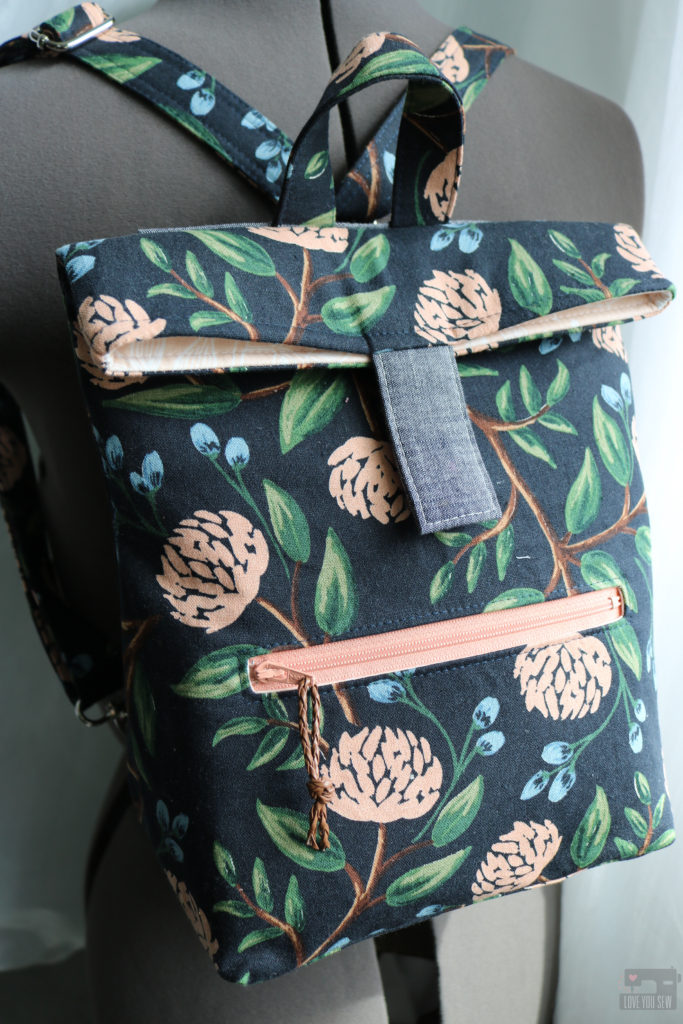
I hope you enjoy this pattern as much I do! Happy Sewing!
Cristy
